What are you looking for?
Most popular topics.
- Sustainable aviation fuel (SAF)
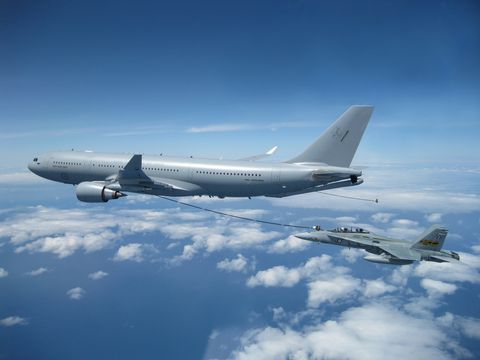
- 3 missions in 1

Refuelling systems
- Technical information
As the most capable new-generation tanker, combat-proven and with unique multi-role capabilities, the A330 MRTT – based on the successful A330-200 – is the benchmark for multi-role tankers.
As a new-generation tanker, the A330 MRTT is a perfect replacement for older aircraft under fleet replacement programmes. With 76 total aircraft sales as of August 2023, the A330 MRTT has been ordered by Australia (as launch customer), France, NATO, Saudi Arabia, Singapore, South Korea, the United Arab Emirates, the UK, Spain and Canada.
Orders & deliveries
Defence Orders & Deliveries, including orders by country
A330 MRTT – Three missions in one
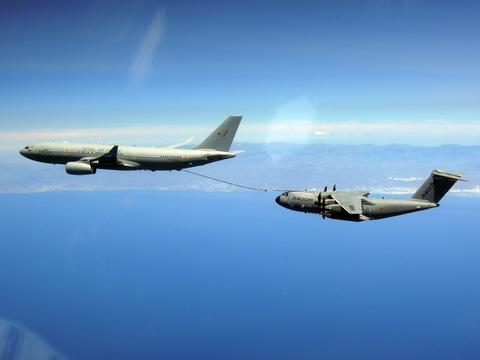
Refuelling mission
The A330 MRTT can carry up to 111 tonnes of fuel; this is the highest capacity of all tanker aircraft, even those with additional fuel tanks in the cargo deck. It has the capacity of offloading 50,000 kg of fuel to a broad range of receivers during a four-hour loitering mission at over 1,000 nm from its take-off point.
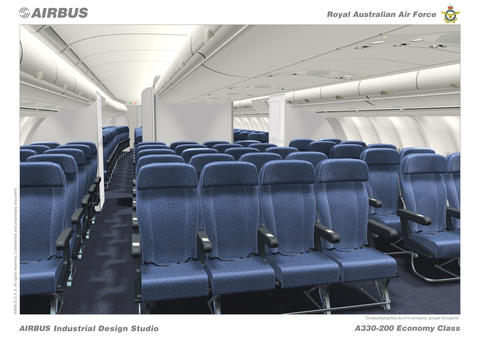
The A330 MRTT can carry a maximum payload of up to 45 tonnes, combining the passenger cabin and the lower deck: up to 300 passengers; MedEvac cabin layout with 40 stretchers, 20 seats for medical staff and 100 passengers; up to 37 tonnes of cargo in the lower deck; 27 LD3 containers or eight military pallets.
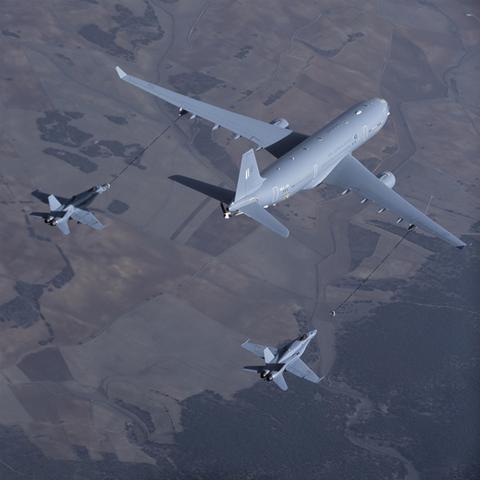
Deployment mission
Another typical mission is the deployment of fighter aircraft over a long distance. The A330 MRTT can support the deployment of four fighter aircraft plus 50 personnel and 12 tonnes of freight (luggage, spare parts and equipment) in one direct flight over 5,200 km, e.g. from Europe to Afghanistan.
Key figures
The A330 MRTT is the most effective tanker based on its unmatched fuel capacity that allows it to offload more fuel at any given distance than any competitor. More fuel on-board means more flexibility, more range and longer time on station. Its enormous fuel capacity allows the A330 MRTT to act as a force multiplier, improving the efficiency and effectiveness of fast jets operations.
Refuelling capabilities of the A330 MRTT have been validated in testing operations with fighter and larger receiver aircraft, and were bolstered by Airbus’ 2018 agreement with Lockheed Martin to jointly explore opportunities to meet the growing demand for aerial refuelling for U.S. defence customers – with the A330 MRTT at its heart.
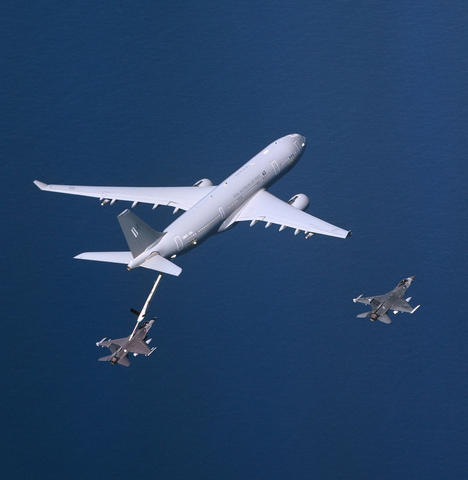
Aerial Refuelling Boom System (ARBS)
To refuel receptacle-equipped aircraft such as the F-16 Fighting Falcon, F-35A Lightning II, or another the A330 MRTT (when fitted with a Universal Aerial Refuelling Receptacle Slipway Installation, UARRSI), the A330 MRTT is provided with the advanced Airbus Defence and Space Aerial Refuelling Boom System (ARBS).
Its fast fuel flow rate (up to a maximum of 3,600 kg/min – 1,200 US gal/min) makes the ARBS the most capable new-generation flight-proven boom available. Excellent handling qualities are provided for the operation of the ARBS, rated as such by independent assessments.
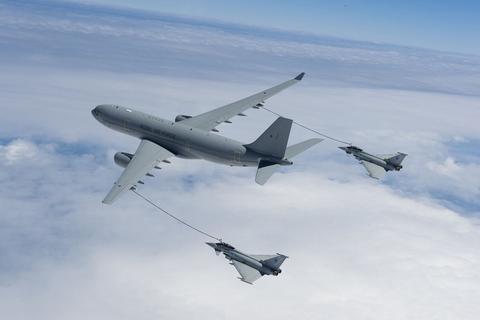
Under-wing pods
Under-wing pods provide simultaneous hose and drogue refuelling at high fuel offload rate (1,300 kg/min – 420 US gal/min), allowing receivers to minimise refuelling time and increase operation efficiency.
The Cobham 905E under-wing pods, currently in service and proven in operation, enable the A330 MRTT to refuel any NATO or allied probe-equipped receivers such as the Eurofighter, the Tornado, the Jaguar or the F/A18 Hornet. The A330 MRTT physical compatibility with receivers across the world is established, demonstrated and certified to allow coalition interoperability.
The 900 series wing-pods incorporate a digitally controlled and electrically operated hose drum unit, optimising reliability and maintainability.
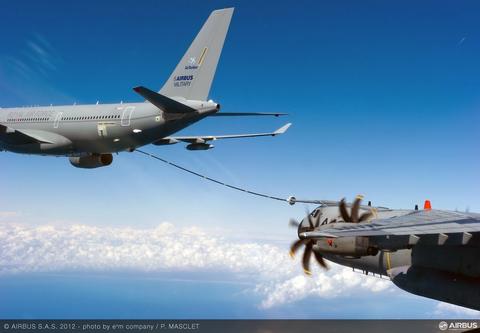
Fuselage Refuelling Unit (FRU)
Large probe-equipped aircraft such as the A400M or C295 can be refuelled at a high fuel offload rate of 1,800 kg/min – 600 US gal/min via the Cobham 805E Fuselage Refuelling Unit (FRU).
The FRU, a removable hose and drogue unit, allows refuelling receivers with a different fuel type. This option ensures NATO fuel type is transferred from wing-pods, while an alternative fuel type is dispensed from the FRU.
Those air-to-air refuelling (AAR) systems are controlled from an advanced Fuel Operator Console that is positioned in the cockpit, increasing the safety of the AAR operation by ensuring a timely and synchronised reaction of the flight crew to unexpected events. It also features an Enhanced Vision System, a high definition 2D/3D digital system that enables performing day and night refuelling and can provide high resolution video recording of the refuelling operations.
Multi-role strategic transport with global reach
With its true widebody fuselage, the A330 MRTT is ideal to carry any kind of military or humanitarian payload on strategic missions.
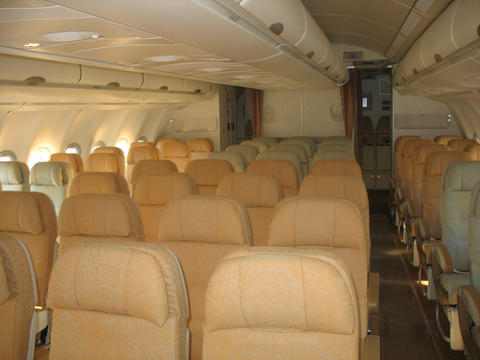
Furnished with an attractively modern design , the cabin is conceived to ensure optimum seating configurations in every class, maximising capacity and providing airline comfort . These features enable a complete range of interior configurations, from pure passenger and troop transport to the complex customisation required for VIP guests. For example, it can accommodate 266 passengers in a typical two-class configuration or some 300 in a single-class layout.
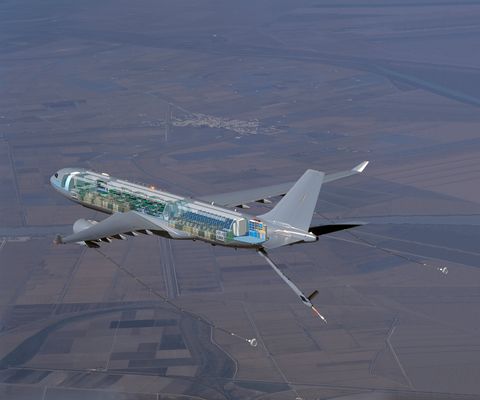
The A330 MRTT is capable of carrying a payload of up to 45 tonnes/99,000 lb . The versatility of the A330 MRTT enables cargo to be conveniently stored inside the lower deck in a variety of cargo options covering the full range of existing under-floor cargo containers and pallets, ranging from the LD1 to LD3 to LD6, as well as the standard 88×108 inch 463-L NATO military pallets. Some of the cargo can also be carried as non-palletised “bulk.” Commercial containers and pallets as well as military equipment and other large items are loaded through a cargo door.
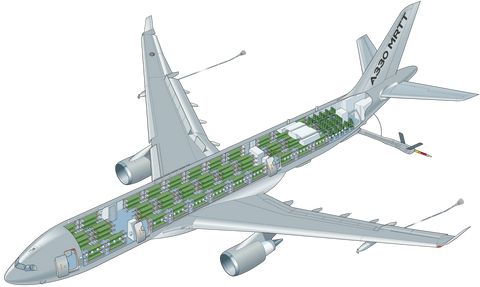
The A330 MRTT is also an outstanding strategic aeromedical evacuation (MedEvac) aircraft. Its large fuselage permits maximum flexibility for up to 130 NATO stretchers to be carried over intercontinental distances. In a “light medevac” configuration , medical beds can be installed above designated fold-down seats. This allows the aircraft to be used as a troop transport on an outbound relief mission, with medical beds stowed in the lower cargo compartments, and then rapidly converted for MedEvac on the return. In an “Intensive MedEvac” configuration, critical care modules can be installed to replicate an intensive care unit in the air. The aircraft could typically carry 28 NATO stretchers, up to six critical care modules, 20 seats for medical staff and 100 passenger seats.
Getting SMART
The Airbus A330 MRTT has become the world’s first tanker to be certified for automatic air-to-air refuelling (A3R) boom operations in daylight following a successful campaign in collaboration with the Republic of Singapore Air Force (RSAF).
Certified by the Spanish National Institute for Aerospace Technology (INTA), this capability is part of the new SMART MRTT developed by Airbus. The A3R system requires no additional equipment on the receiver aircraft and is intended to reduce air refuelling operator (ARO) workload, improve safety and optimise the rate of air-to-air refuelling (AAR) transfer in operational conditions to enable air superiority.
The certification of the A3R capability is the result of a successful journey that started in 2018 with the world’s first automated contact with a boom system in a joint operation with the Royal Australian Air Force (RAAF). Since then, we’ve achieved more aeronautical “world firsts” thanks to the support of our customers, especially with the key participation of our partner the RSAF, a launch customer and the first operator to benefit from this game-changing capability. The A330 MRTT continues to increase its technological advantage with superior air refuelling capabilities.
Refuelling Goes Automatic - SMART MRTT
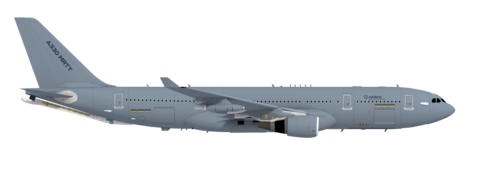
A330 MRTT Technical information
Technical description of A330 MRTT
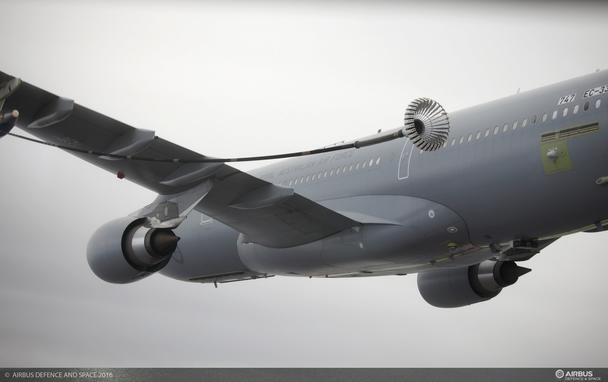
Media Centre
Browse our photos, videos and downloadable assets of A330 MRTT
Latest A330 MRTT News

Pitch Black 24: Logistics and maintenance as backbone of a seamless military exercise

Pacific Skies 24: How Airbus serves air forces around the world

Pitch Black 24 – Eurofighter aircraft defend territory from enemy attack
Discover our military aircraft portfolio.
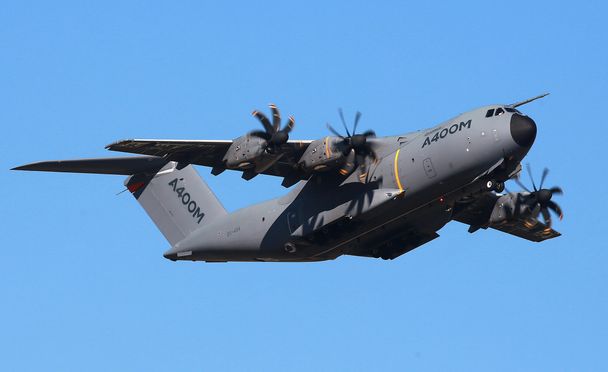
Eurofighter
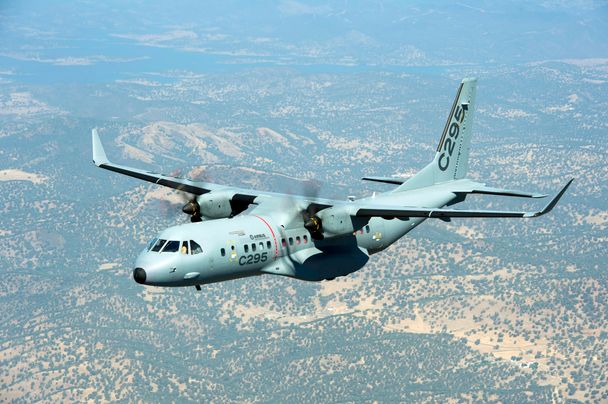

AirTanker Voyager (A330 MRTT)
In-flight refueling tanker aircraft, united kingdom | 2012, "the royal air force expects to lease some fourteen french airbus a330 mrtt tankers under the voyager kc2 and kc3 designations.".

Listen Live
Voyager: All you need to know about the RAF's fuel station in the sky
The Voyager is the RAF's only air-to-air (AAR) tanker and can also be used as strategic air support.
There are two versions currently in service – the Voyager KC.Mk 2, which has two underwing pods for refuelling fast jets, and the Voyager KC.Mk 3, which has an extra centreline hose for bigger aircraft.
The aircraft are based in RAF Brize Norton and is flown by 10 Squadron and 101 Squadron.
- RAF Voyager and A400M Atlas work together on Exercise Mobility Guardian
- How a unique team of reservists operates RAF Voyagers in warzones and civilian environments
- RAF Voyager takes 291 giraffes on flight to raise cash for charity
Fuel offloaded during the AAR is siphoned off from the Voyager’s wing and fuselage tanks and the cabin holds 291 personnel. Amongst its abilities, the Voyager can 'towline', meaning it can circle around a set area awaiting 'receivers'.
It can also fly with several jets, refuelling them during long-distance journeys, while taking control of the formation and navigation.
Its other purpose is to be a passenger aircraft like a civilian airliner. However, it has a defensive aid suite, therefore, it can supply personnel to theatres around the world. The plane can take palletised or bulk freight in its lower fuselage hold.
Beyond personnel and freight, the Voyager is able to fly with a maximum of 40 stretchers and three critical care patients and it can be used by VIPs like the Prime Minister.
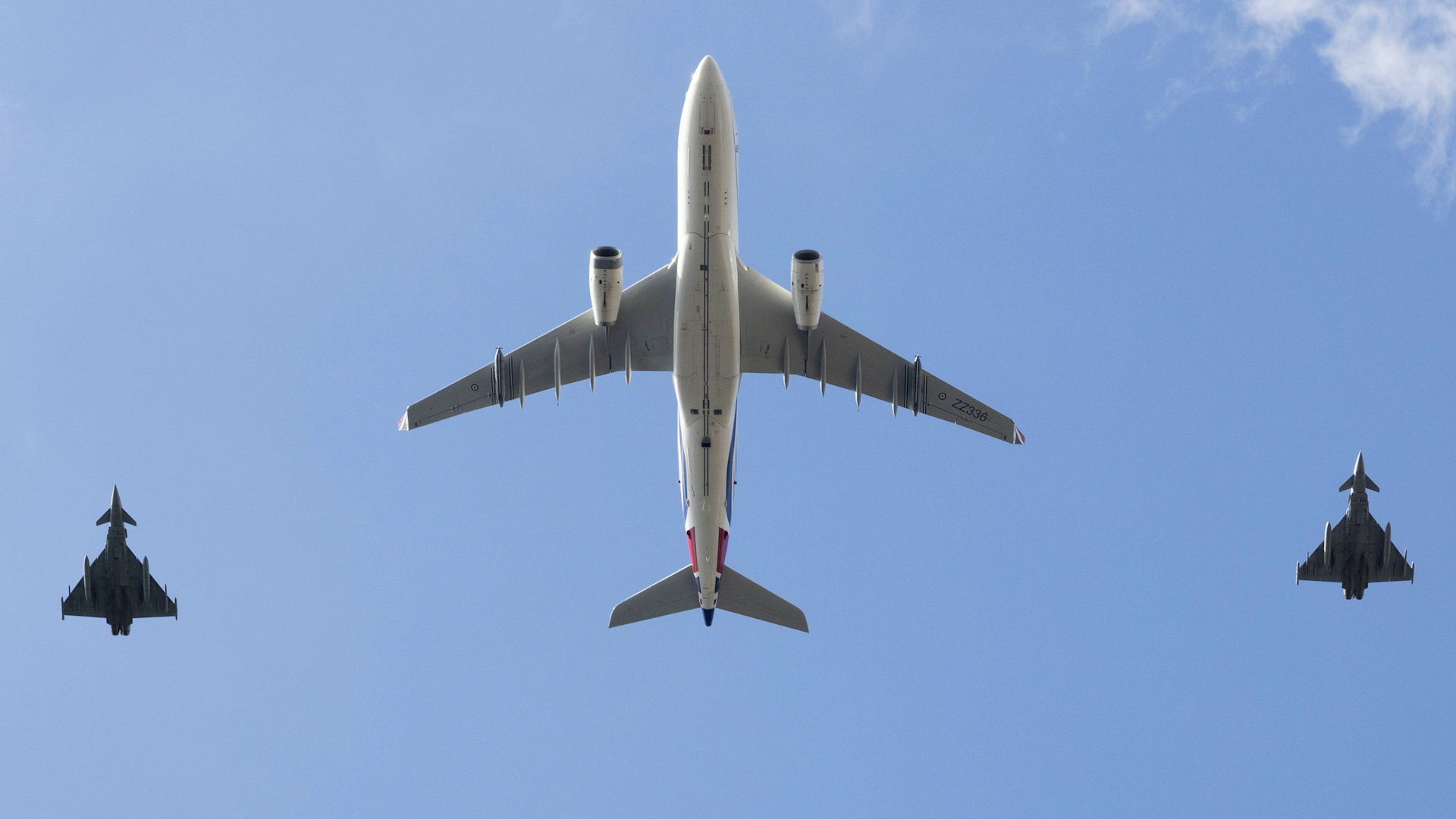
Its first voyage with 10 Squadron was in 2012 as a transport sortie leaving Brize Norton to get to RAF Akrotiri in Cyprus.
Following difficulties with some technical issues of the refuelling process, the Voyager started in its role as a fuel tanker in the skies in the summer of 2013. In the same year, 101 Squadron started getting into the air on the Voyage with 10 Squadron and AirTanker’s reservists.
Voyagers are based around the world in places like the Falkland Islands and at RAF Brize Norton.
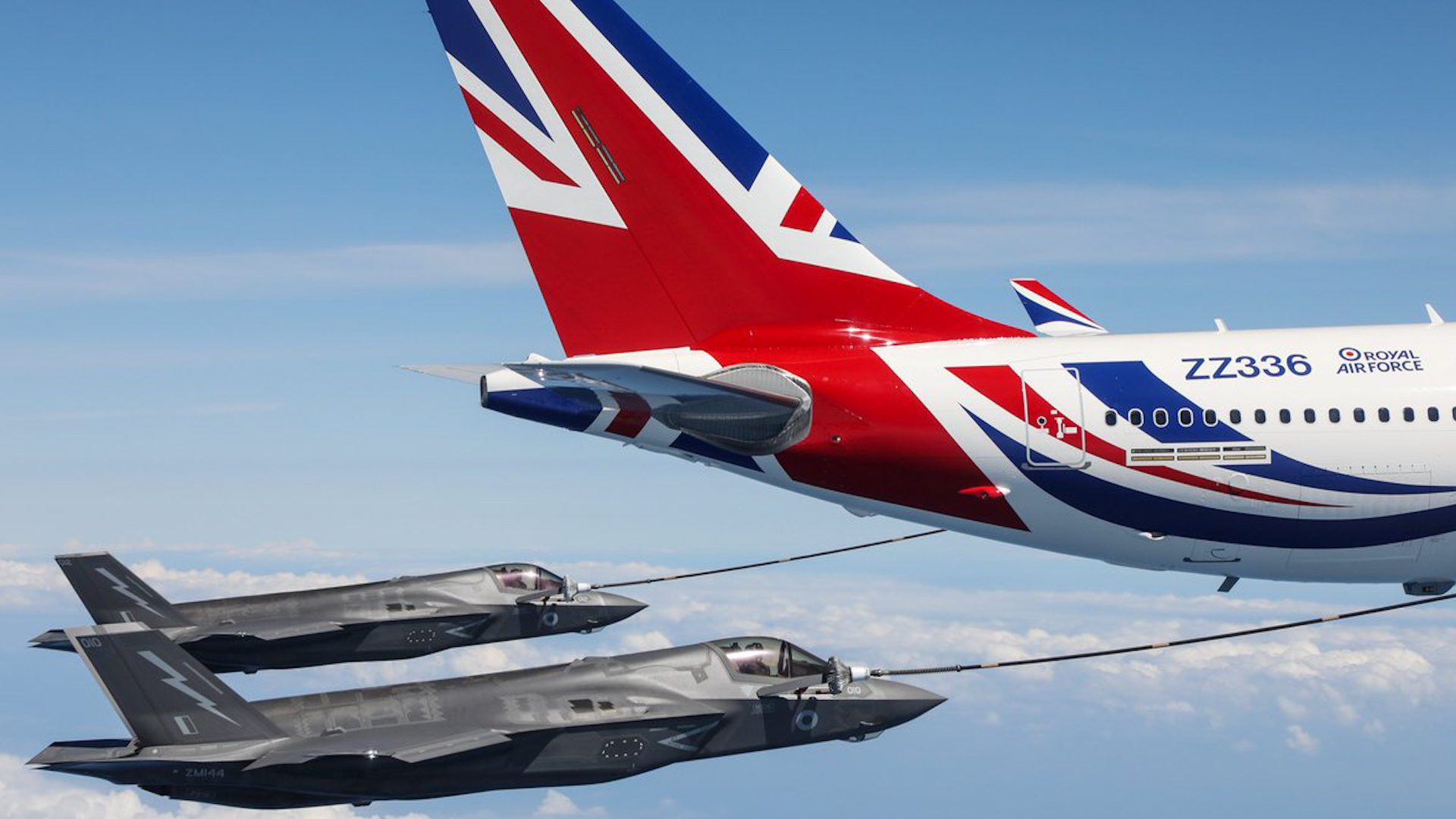
Notable incidents
In 2021, the Voyager was used by the RAF as part of Operation Pitting to transport Afghans following the Taliban takeover of Afghanistan. Elsewhere, in the fight against so-called ISIS, Voyager aided Typhoon FGR4s in operations such as Operation Shader. Operation Shader (OP Shader) was the codename for the UK's contribution to the US-led mission against so-called Islamic State (IS).
A Voyager was given a £900,000 makeover during Boris Johnson's time as Prime Minister, with a new paint job changing it from its normal grey colour to red, white, and blue Union Jack styling.
In addition, the plane has been used to support Typhoons when they intercept Russian jets if they come close to UK airspace in incidents over the years.
RAF Voyager specifications:
- Powerplant: two 71,100lb st (316kN) Rolls-Royce Trent 772B turbofans
- Length: 192ft 11¾in (58.82m)
- Height: 57ft ½in (17.39m)
- Wingspan: 197ft 10in (60.30m)
- Wing area: 3,892.20sqft (361.60m2)
- Maximum speed: around Mach 0.86
- Typical mission range: capable of delivering around 132,000lb (60,000kg) of fuel during five hours on station at 500nm (930km) from base
- Range with maximum payload: 4,500nm (8,334km)
- Maximum range with maximum fuel: 8,000nm (14,816km)
- Maximum altitude: 41,000ft
- Maximum fuel load: 245,000lb (111,000kg)
- Maximum payload: around 99,000lb (45,000kg)
- Maximum passenger load: 291
Related topics
Join our newsletter.
Please select at least one newsletter to subscribe to:
Army Super Cup final LIVE | 6 SCOTS v 1 Mercian Regiment | Live Football
Rain stops play and pushes inter corps cricket finals day into new season, torrential rain doesn't dampen goal-fest for 1 mercian v 2 scots, most popular.

Significant milestone as Spear 3 cruise missile set to be test-fired by end of this year

Leopard 1 could roar even louder thanks to new engine from Rolls-Royce and FFG

Ex-RAF commander drops rank to join Honourable Artillery Company as trooper
How playing call of duty boosts soldiers' situational awareness, join a typhoon display pilot on his stunning vertical climb, latest stories.

Keir Starmer says Ukraine will be central focus of upcoming visit to the White House

Watch again: 6 Scots take on 1 Mercian in Army Super Cup Final 2024
Editor's picks.

Globemasters make dark descent as they land on dried-up desert lakebed at night

Turbo view: Fly above the clouds in a stunning vertical climb with Typhoon display pilot

Household Cavalry Mounted Regiment conducts King's Life Guard without horses

- Air Power Dynamics
- Global Dynamics
- Maritime Dynamics
- Multi-Domain Dynamics
- Re-Shaping Defense & Security
- Re-Thinking Strategy
- Defense Decisions
- Disruptive Technologies
- Autonomous Ground Systems
- MARTAC Maritime Autonomous Systems
- Maritime Patrol Systems
- Missile Systems
- Naval Ships
- Space Systems
- Tron Warfare
- Maritime Unmanned Systems
- Unmanned Air Systems
- Weapon Systems
- Book Review
- Global Partners
Newsletter Signup
In an effort to be in compliance with GDPR we are providing you with the latest documentation about how we collect, use, share and secure your information, we want to make you aware of our updated privacy policy here
- Email Address *
- Consent * I’ve read and accept the terms of the privacy policy . *
- Name This field is for validation purposes and should be left unchanged.
RAF A330MRTT: The Voyager in Action

The RAF variant of the A330MRTT is called the Voyager and was purchased through a public-pirvate partnership approach.
According to the RAF website , the Voyager and its role within the RAF is described as follows:
Voyager is the RAF’s sole air-to-air refuelling (AAR) tanker and also operates as a strategic air transport. The aircraft is in service as the Voyager KC.Mk 2, equipped with two underwing pods for refuelling fast jets, and as the Voyager KC.Mk 3, with an additional centreline hose for use by large aircraft.
Fuel offloaded during AAR is taken from the aircraft’s standard wing and fuselage tanks, leaving the cabin free for up to 291 personnel and the hold available for freight. As a tanker, capabilities include the ability to operate a ‘towline’, where the Voyager orbits around a prescribed area awaiting ‘receivers’, or in a ‘trail’, where it flies with a number of fast jets, refuelling them over long ranges while taking responsibility for the formation’s fuel and navigation.
Alternatively, it can operate as a passenger aircraft in much the same way as a civilian airliner, but delivering personnel safely into theatre thanks to its defensive aids suite. Voyager also offers considerable capacity for the movement of palletised and/or bulk freight in its lower fuselage hold. A versatile aeromedical configuration, including the ability to carry up to 40 stretchers and three critical care patients is available, as is a modest VIP passenger fit.
TYPE HISTORY
Airbus Industrie launched its combined A340/A330 programme on June 5, 1987. It aimed to produce a family of closely related widebody airliners based on the four-engined, long-haul A340 and twin-engined, medium-haul A330. The latter achieved its first flight, with General Electric engines, on November 2, 1992, with the initial Rolls-Royce Trent-powered machine following on January 31, 1994.
Typically for Airbus, the A330’s pilots interact with its fly-by-wire system via sidestick controllers rather than the yoke traditionally associated with large aircraft. The basic A330-200 and longer A330-300 have been developed into a wide range of subvariants offering revised performance and different maximum take-off weights.
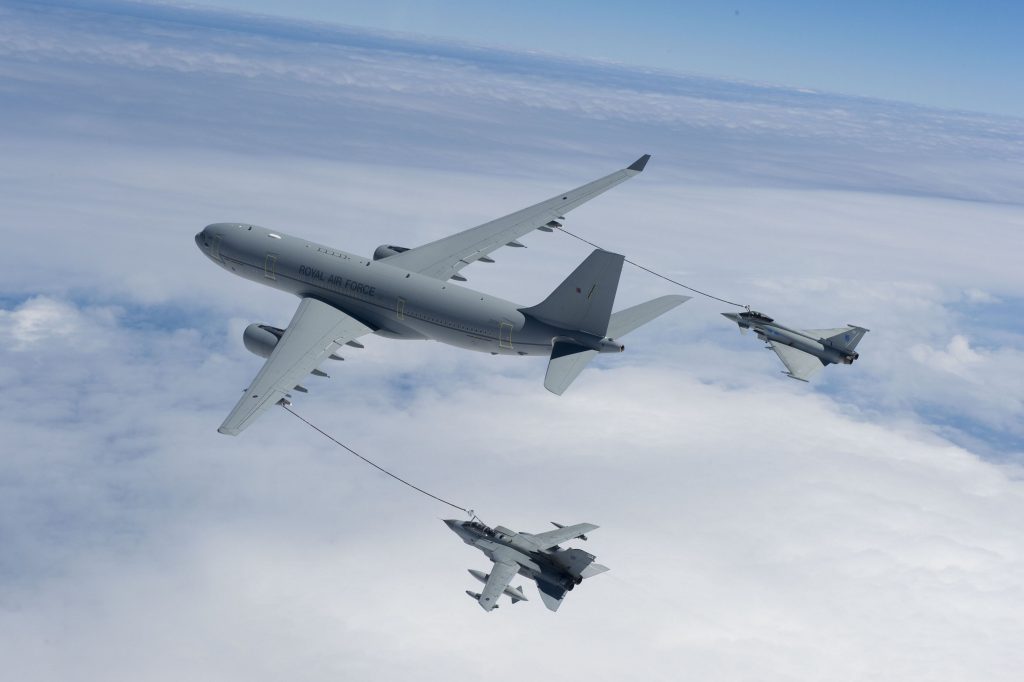
The earlier A310 widebody had found favour with several air arms as the basis for conversion into a military transport or multi-role tanker transport (MRTT), and Airbus recognised the type’s potential as a possible TriStar/VC10 replacement in the early 1990s, trialling a modified aircraft alongside RAF fast jets in 1995.
It was subsequently expected to offer the A310 MRTT against the UK’s Future Strategic Tanker Aircraft (FSTA) requirement, announced as a likely private finance initiative (PFI) programme in 2000. In the event, the procurement process was delayed and although Airbus did not tender, in 2004 the Ministry of Defence announced its intention to acquire a variant of the A330 MRTT.
Under a March 2008 agreement, the AirTanker consortium was selected to provide 14 aircraft under a 27-year contract. This includes a so-called ‘Core Fleet’ of eight military serialled and one civilian-registered aircraft, supplemented by a ‘Surge Fleet’ of five civilian-registered aircraft that AirTanker uses commercially to generate additional revenue. The surge aircraft are demodified very close to A330-200 standard and can be recalled for military use if required.
AirTanker owns, manages and maintains the aircraft and provides infrastructure, support, training facilities and some personnel, in particular Sponsored Reserve pilots and engineers. Named Voyager in service, the A330 MRTT began RAF operations with 10 Sqn on May 12, 2012, flying an air transport sortie from its Brize Norton home base to RAF Akrotiri, Cyprus.
Issues with the drogues, or ‘baskets’ into which receivers insert their probes during refuelling operations delayed Voyager’s debut in the tanker role, but these had been overcome by summer 2013 and the aircraft’s ability to deliver fuel to a variety of RAF and allied aircraft expanded very quickly. Also in 2013, 101 Squadron retired the RAF’s final VC10s and began flying Voyager alongside 10 Sqn and AirTanker’s reservists.
Although it ranges worldwide, Voyager remains home-based at Brize Norton. One aircraft is always available on the Falkland Islands, primarily in support of the Typhoon QRA jets, but also available to the Hercules. Another of the type operates the regular airbridge to and from the Falklands and Voyager is making a major contribution to Operation Shader, offloading fuel to RAF Tornados and Typhoons, and a variety of Coalition jets, including US Marine Corps Harriers and F/A-18 Hornets.
The Voyager has provided global reach for the RAF as they have operated their Eurofighters globally. As then RAF Lossiemouth base commander, Group Captain and now Air Commodore Paul Godfrey put it with regard to their global deployments:
“In my entire time in the Royal Air Force, I’ve not seen a global deployment as we managed at the end of last year with our deployment to Malaysia, Japan and Korea.
Throughout the period we visited the United Arab Emirates, India, Malaysia, Japan, The Republic of Korea, Brunei and back through India, UAE and Greece which is about as global a deployment as you can get.”
And flying with their Voyager is a key part of the global reach effort.
For example, in 2016, RAF Typhoons fly to South Korea to exercise with US and South Korean forces.
According to a news item on the RAF website published on November 8, 2016, between 4 and 10 November 2016, the Republic of Korea (ROK) Air Force hosted “Invincible Shield,” the first ever combined air exercise with the US and the UK.
Four Eurofighter Typhoons from Royal Air Force (RAF) No. 2 Squadron deployed to Osan Air Base in Korea after conducting exercises in Malaysia and Japan. C-17 Globemaster transport aircraft, Voyager tanker aircraft, and around 200 RAF personnel will also participate.
And the Voyager carried personnel inside the aircraft and refueled during the deployment from its wings to provide both a lift and tanking capability during the flight to the mission.
Clearly, the Voyager and the A330MRTT are now part of the global allied tanking efforts.
For example, this May, RAF Mildenhall hosted the 5th annual European Tanker Symposium where Voyager was a key participant.
The symposium, held every year since 2012, allows NATO allies to share their experiences, discuss mixed tanker formation standards, and build on tanker integration.
The week-long event included mixed formation academics, discussions and flights in a KC-135 Stratotanker and a Royal Air Force Voyager. Ultimately, the event was to establish and initialize best practices when flying in a multinational formation, and the goal was once again achieved.
“This is one of the first times that we’ve gotten together as European partners to specifically concentrate on these tactics, techniques and procedures on how we operate together,” said Lt. Col. Timothy Mach, 100th Operations Group deputy commander. “Being able to fly on the airplanes, we can all get an idea of the countries that don’t normally do formation flying together, and we can start building those procedures.”
Flying in a multinational tanker formation is something the ETS is trying to safely create. During the days leading to the formation flight, aircrew shared differences in the terminology and procedures they each use.
“I think the procedures have remained largely the same,” said RAF Flt. Lt. Elizabeth Herbert, RAF Voyager captain. “It’s the fundamental basics that are important — remaining a safe distance from each other when you meet up, and ensuring that you can remain in a close formation. It doesn’t really matter what large aircraft you have in that scenario; providing we maintain these techniques, the type of large aircraft – whether currently or in the future – doesn’t matter.”
The featured photo shows the Voyager bringing the first four F-35s home to Britain from the United States.
The first of Britain’s next-generation fighter jets are set to arrive home tonight, two months ahead of schedule, in a major milestone for the Royal Air Force and Royal Navy.
The F-35s took off from Marine Corps Air Station Beaufort and were flown by British pilots of the newly-reformed 617 Squadron, which was immortalised by the famous Dambusters’ raid during World War II.

- May 8, 2019

Photograph:
RAAF Airbus KC-30A A39-005 at the Australian International Air Show at Avalon, VIC in 2015 (David C Eyre)
Country of origin:
International
Description:
Long/medium range military multi-role tanker / transport
Power Plant:
Two 67,500 lbst Rolls Royce Trent 772B turbofans
Specifications:
- Length: 63.68 m (208 ft 11 in)
- Height: 16.84 m (55 ft 3 in)
- Max operating Mach Number: 0.86
- Typical operating Mach Number: 0.82
- Take-off run at sea level: 2,713 m (8,900 ft)
- Range with max passengers at max weight with international allowance and 370 km (230 mile) : diversion 8,889 km (5,523 miles)
- Fuel capacity: 139,900 litres (36,744 Imp gals)
- Empty weight: 121,166 kg (267,125 lb)
- Max payload: 47,837 kg (105,460 lb)
- Loaded weight: 217,000 kg (478,000 lb)
- Max landing weight : 179,000 kg (394,625 lb)
The Airbus A330-200MRTT was selected by the Australian Government for the RAAF ahead of the rival Boeing KC-767 to fulfil Project Air 5402 in April 2004 after a Request for Tender was released in June 2003 for both acquisition and Through Life Support contracts. The schedule of five aircraft to replace the Boeing 707s then in service was said to have a significant strategic air-lift capacity when not engaged in aerial refuelling tasks, including the ability to carry 293 passengers and a significant amount of cargo. The contract was signed with EADS CASA in December 2004 and a further contract was signed in March 2005 for self-protection systems for the aircraft, the unit to operate the aircraft, No 33 Squadron, being relocated from Richmond, NSW to Amberley, QLD.
The A330-200MRTT, or KC-30A, was a substantially modified military derivative of the A330-200 airliner, 20 of which have been operated by Qantas. A contract was signed with Qantas Airways Ltd in February 2007 to provide service to the aircraft.
The first KC-30A was rolled out of the modification facility at Getafe near Madrid in Spain in June 2007 and shown at the Paris Air Show in support of EADS’ US Air Force KC-X tanker program bid. The conversion process involved the modification of approximately 2,000 structural parts, 5,500 system parts requiring nearly 22,000 components to be delivered to the conversion centre, and the installation of some 400 new wiring harnesses. Phase 1 testing was completed in February 2008 and in that time the test Airbus A310 had logged 202 hours over 63 flights. In June 2008 the first ‘g reen’ aircraft arrived in Brisbane, QLD for further work by Qantas.
The flight test program of the prototype Australian conversion of an airbus A330-200 into KC-30A MRTT (Multi Role Tanker Transport) commenced in late 2009, the aircraft after test flights in Queensland being flown to Spain where it joined the first KC-30A tanker in the Airbus Military certification and Australian Air Force approval program. Four aircraft were converted to tanker configuration by Qantas at Brisbane airport, the aircraft being flown to Australia for conversion after completion by Airbus at Toulouse in southern France, the fifth being converted in Spain. First test flight in Australia was made on 15 October 2009. The aircraft was in yellow factory finish at that time. On 18 January 2011 one aircraft lost most of its EADS-designed Advanced Refuelling Boom System while conducting refuelling currency training with Portuguese Air Force General Dynamics F-16s.
The tankers have been attached to No 33 Squadron based at Amberley and have been fitted with DIRCM (Northrop Grumman Directional Infrared Counter Measures) equipment. All five aircraft have an Aerial Refuelling Boom System and two Cobham under-wing refuelling pods and, when required, are capable of operating as strategic airlift aircraft.
The five aircraft were: A39-001 (c/n 747 – ex F-WWYI, EC-330) which made its first flight on 30 March 2006; first post conversion flight on 15 June 2007; delivered in late 2011. A39-002 (c/n 951 – ex F-WWYR, EC-333) which made its first flight on 14 April 2008 and completed the first MRTT flight in RAAF service on 16 September 2011. A39-003 (c/n 969 – ex F-WWYQ, EC-334) which made its first flight on 24 October 2008 and its first post conversion flight on 12 October 2010. A39-004 (c/n 1036 – ex F-WWKZ, EC-336) which made its first flight on 10 July 2008 and first post conversion flight on 20 August 2011. A39-005 (c/n 1183 (ex F-WWKS, EC-336) [both A39-004 and A39-005 carried the same Spanish registration] which made its first flight on 22 November 2010 and arrived in Brisbane on 26 May 2011. Full operational capability for Air Logistic Services, and pod and boom air-to-air refuelling with the RAAF, was expected to occur in late 2013.
In September 2014 a number of RAAF Super Hornets and a KC-30A (A39-002) flew to Al Minhad Air Base near Dubai in the United Arab Emirates to join western forces fighting against ISIS forces in Iraq. On 3 October 2014 the KC-30A was involved in air-to-air refuelling of French Armee de l’Air Rafale F-1 fighters and was also involved in refuelling the Australian Super Hornets during bombing missions over Iraq. Subsequently, as a contingency, the KC-30A was cleared to transfer fuel to US Navy and Marine McDonnell Douglas FA-18A Hornets and Boeing EA-18G Growlers, Northrop Grumman EA-6B Prowlers and McDonnell Douglas AV-8B Harriers, and RAF Panavia Tornados and Eurofighter Typhoons. By early November 2014 the KC-30A had flown 33 sorties and passed 1.134 million kilograms of fuel to Super Hornets, Harriers and Rafales. In late 2014 France placed an order for 12 examples of the KC-30A, becoming the sixth nation to order the type, with deliveries to commence from 2018.
In July 2015 the Australian Government announced it was obtaining two Model A330-200s as part of an upgrade to the Williamtown RAAF base, NSW, stating the two aircraft would be converted to KC-30A airborne refuelling configuration by Airbus Defence & Space at Getafe near Madrid, Spain, and would be delivered to the RAAF in 2018. This would bring the fleet of the type for the Air Force to a total of seven aircraft, serials A39-006 and A39-007 being allotted. These aircraft were VH-EBH (c/n 892 – ex F-WWYT, EC-339) and VH-EBI (c/n 898 – ex F-WWKM, EC-334). They were previously owned by CIT Aerospace and leased to Qantas, the airline operating them from 2007. VH-EBH ceased operating Qantas services in May 2015 and VH-EBI ceased operations in November 2015, both being converted, the first A39-006 being painted at Manching in Bavaria in March 2017 before being delivered.
On 25 September 2015 an RAAF KC-30A (A39-001) in the United States made contact with an F-35A development aircraft (c/n AF-4), making in all a total of 59 contacts, five of which involved wet transfers of 19,051 kg (42,000 lb) of fuel.
In the 2016 Defence White Paper released on 25 February the Australian Government stated two more KC-30A / A330-200MRTT aircraft would be obtained in addition to the two ex-Qantas A330-200s already to be converted, making a total of nine aircraft to be operated by the RAAF in the future.
At one stage during its development the KC-30A became known in Government circles as “a Project of Concern” but after some time in service it became known as “The Tanker of Choice” and as a “Force Multiplier”. The envelope for the operation of the aircraft has been expanded and at one stage 14 General Dynamics F-16 Fighting Falcons of the USAF 14th Fighter Squadron were assisted in three flights from Japan to Darwin, NT over three days to take part in exercises. In November 2016 a KC-30A deployed to Edwards Air Force Base in the United States to commence trials with the Rockwell B-1B Lancer, and during 2017 trials commenced with the RAAF’s new Boing EA-18G Growler and later the Boeing P-8A Poseidon.
In August 2018 the Department of Defence announced the RAAF’s KC-30AMRTT tanker/transports during their deployment to the Middle East under operation OKRA had transferrd 45,000 tonnes of fuel during air-to-air refuelling operations. No 33 Squadron had maintained a single aircraft in the Persian Gulf region to support the RAAF Air Task Group and Coalition aircraft on combat operations up into Iraq and Syria.
- No categories
- Entries feed
- Comments feed
- WordPress.org
Save my name, email, and website in this browser for the next time I comment.
- + - Font Size
Switch language:

A330-200 MRTT Future Strategic Tanker Aircraft (FSTA)
The A330-200 MRTT tanker aircraft is used by a number of countries to meet their aerial refuelling and strategic transport needs.
Project Type
Aerial refuelling and air transport aircraft

Empty Weight
Take-off weight, optional maximum take-off weight, maximum speed.
380 passengers and eight military pallets plus one LD6 container + one LD3 container
Manufacturer
Airbus Military
Royal Australian Air Force, Royal Air Force, United Arab Emirates Air Force and Royal Saudi Air Force
Maiden Flight
Entry into service.
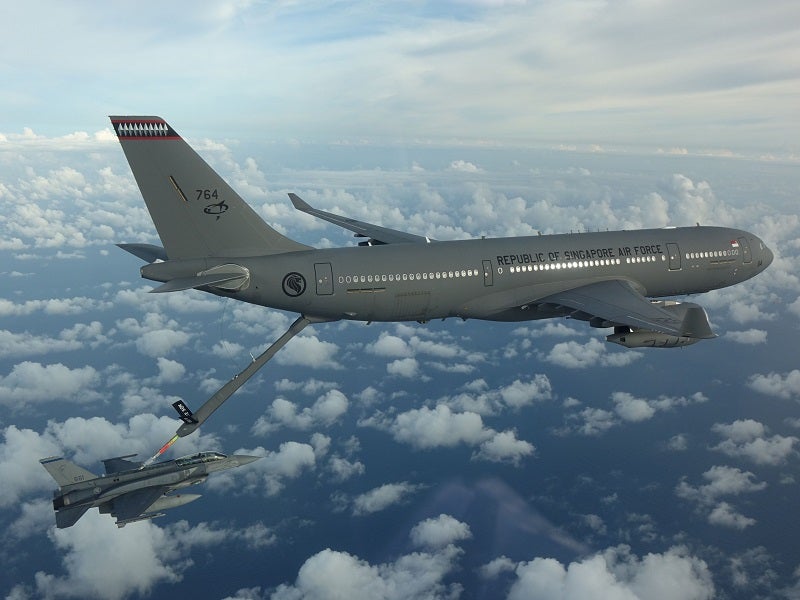
The A330-200 MRTT is a new generation, combat-proven multi-role tanker transport (MRTT) aircraft manufactured by multinational aerospace and defence company Airbus.
In January 2004, the UK Ministry of Defence (MoD) announced the selection of the AirTanker consortium to provide air-to-air refuelling services for the British Army, Navy and Air Force, under the future strategic tanker aircraft (FSTA) programme. The AirTanker consortium comprises Airbus, Rolls-Royce, Babcock, and Thales.
Recommended White Papers
VPT Series DC-DC Converters and Power Accessory Modules
Selecting the correct level of dc-dc converter for your application, recommended buyers guides.
Rugged data systems for the military
Pilot training and simulation for the air force .
The new tanker transporters, known as Voyager in the RAF service, replaced the RAF’s fleet of 26 VC-10 and Tristar tanker aircraft.
The MoD air-to-air refuelling programme will cover a 27-year service period and represents the world’s largest defence private financing initiative arrangement. The contract includes options to extend the service for a further period.
In addition to the UK, the aircraft is operated by several other countries. Airbus received orders for 61 aircraft and delivered 48 aircraft, to date.
Future strategic tanker aircraft (FSTA) programme
AirTanker was confirmed as the preferred bidder for the FSTA project in February 2005.
In June 2007, the UK MoD approved the private finance initiative (PFI) for the procurement of 14 A330-200 tankers.
Under the PFI, AirTanker owns and supports the aircraft, while the RAF flies the aircraft and has total operational control.
The UK MoD placed a 27-year contract for the 14 aircraft in March 2008. The maiden flight of the RAF’s first A330-200 took place in September 2010. The second aircraft took off on its first flight in October 2010. The first A330-200 MRTT entered service in June 2011. The delivery of the final aircraft under the programme was completed in July 2016.
VT Group, the support services integrator, is based at RAF Brize Norton. The RAF aircrew operate the aircraft for military services. When not in military service, the aircraft can be leased for commercial use and operated by civilian aircrew.
The fleet is managed in three groups. The majority is in full-time military service with the RAF.
Airbus A330-200 MRTT international orders
In April 2004, Australia also selected the A330-200 MRTT for the AIR 5402 requirement for five aircraft. The MRTT, designated the KC-30B, replaces Australia’s Boeing 707 tanker transporters. In June 2006, Airbus delivered the first A330 platform to EADS CASA in Madrid for conversion.
The first flight of the KC-30B for Australia took place in June 2007. Delivery of the first two A330-200 MRTT aircraft to the Royal Australian Air Force (RAAF) occurred in June 2011.
The fifth and final aircraft was handed over to RAAF Base Amberley in December 2012. The RAAF A330-200 MRTT achieved initial operational capability (IOC) in February 2013.
The UAE selected the A330 MRTT in February 2007 and announced the procurement of three A330-200 MRTT aircraft in 2008. The first aircraft accomplished its maiden flight in April 2011 and was delivered to the UAE Air Force in February 2013.
UAE received the second and third A330 MRTT aircraft from Airbus Military in May 2013 and August 2013, respectively.
In January 2008, Saudi Arabia placed an order for three A330 MRTT aircraft, which are equipped with the EADS air refuelling boom system (ARBS) and hose and drogue refuelling pods. Three more A330 MRTT aircraft were ordered by the Saudi Ministry of Defence and Aviation in July 2009, bringing the total number of orders to six.
The first A330-200 MRTT of the Royal Saudi Air Force (RSAF) completed its maiden flight in March 2011 and the first batch of three aircraft was delivered by early 2013.
The A330 MRTT aircraft formally entered service with the RSAF in February 2013. Delivery of the first two aircraft of the second batch took place in 2014, while the sixth and final A330 MRTT aircraft were delivered in June 2015.
In February 2008, the KC-30 (since re-designated the KC-45), a tanker based on the A330, was preferred for the US Air Force KC-X next-generation tanker requirement to replace the KC-135. Northrop Grumman led the KC-30 team, with EADS as a major subcontractor. In September 2008, the US Department of Defense upheld an appeal by competitor Boeing and cancelled the competition.
In January 2013, Airbus Military was selected as a preferred bidder by the Indian government to supply six A330 MRTT aircraft for the Indian Air Force.
The French Defence Procurement Agency (DGA) placed a firm order for eight A330 MRTTs in December 2015 and a further three in December 2018. Designated as ‘Phénix’, the first aircraft was formally handed over in October 2018, while the delivery of the rest of the fleet will be completed by 2023.
In March 2018, Airbus received a revised contract for the delivery of eight A330 MRTTs, under the NATO Multi-national Multi-Role Tanker Transport Fleet (MMF) programme, with options for additional aircraft. The first, second, and third aircraft were delivered in June, August, and November 2020, respectively.
The fourth A330 MRTT under the programme was delivered in April 2021, followed by the fifth in August 2021. The full fleet of nine MRTT aircraft will serve air-to-air refuelling, strategic transport, and medical evacuation needs of six participating countries, namely Belgium, Germany, Czech Republic, The Netherlands, Luxembourg, and Norway.
The Republic of Singapore Air Force received its first A330 MRTT aircraft in September 2018.
In January 2019, the Republic of Korea Air Force received its first A330 MRTT, bringing the total in-service fleet count to 35.
Manufacture / conversion of A330-200 future strategic tanker aircraft
The standard A330-200 commercial aircraft manufacturing takes place at the Airbus manufacturing centre at Toulouse, while the conversion of the aircraft is performed at the company’s facility in Getafe, Spain, where it is fitted with refuelling systems and military avionics.
The aircraft can be fitted with two Cobham FRL 900E Mark 32B refuelling pods, one under each wing. The A330-200 wing shares the same design structure, including the strengthened mounting points, as that of the four-engine A340 aircraft. The wing positions for mounting the air-to-air refuelling pods, therefore, require minimal modification.
The aircraft’s fuel system includes the installation of additional pipework and controls.
The baseline commercial aircraft uses a configuration of very high-capacity fuel tanks in the wings, so modifications to the fuel tanks for the tanker transporter role are not required.
Other than the refuelling systems, the main areas of modification are the installation of plug-in and removable military avionics, military communications, and a defensive aids suite. The military systems will be removed when the aircraft is in commercial non-military use. The passenger cabin and the cargo compartment are unchanged.
The lower deck cargo compartment can hold six 88inx108in Nato standard pallets, plus two LD3 containers. The civil cargo load could be 28 LD3 containers or eight 96inx125in pallets plus two LD3 containers.
Mission capabilities of the A330-200 MRTT aircraft
The A330-200 MRTT has a sufficiently high cruise speed and sizeable internal fuel capacity to fly 4,000km, refuel six fighter aircraft en-route, and carry 43t of non-fuel cargo. Similarly, the
aircraft could give away 68t of fuel during two hours on station at a range of 1,000nm. The aircraft has a maximum fuel capacity of 139,090l, or 111t.
The high fuel capacity enables the aircraft to fly at longer ranges, to stay on station longer and refuel more aircraft, which increases the basing options and reduces forces reliance on host nation support. For the UK requirement, the aircraft is fitted with a hose and drogue system. However, it has a refuelling boom system for the Australian order.
The two-hour flight test included various approaches to the refuelling positions and exploring displacements vertically and laterally from the normal refuelling position. The trial was carried out between 15,000ft and 20,000ft and at 280kt, which is the middle of the Tornado’s refuelling envelope. Within this test envelope, there was minimum turbulence in the airflow astern the A330-200 and the Tornado’s handling qualities were very satisfactory in all tested positions.
In July 2018, Airbus performed the first ever automatic air-to-air refuelling of the A310 tanker with seven RAAF KC-30A MRTT. The company plans to perform the same operation with the A330 MRTT. In December 2018, Lockheed Martin and Airbus entered a co-operation agreement to develop the air refuelling capabilities of A330 MRTT.
The passenger cabin and the cargo compartment are unchanged. Even with a full fuel load, the aircraft can carry 45t of cargo and up to 300 passengers.
The aircraft can be used to perform aeromedical evacuation operations. The aeromedical evacuation configuration is equipped with two intensive care units (ICUs), 16 stretchers, 96 economy-class seats, 21 seats for medical staff, and cargo capacity in the lower deck.
The aerial refuelling boom system (ARBS) can be used to refuel receptacle-equipped aircraft such as F-35A Lightning II and F-16 Fighting Falcon. It has a maximum fuel flow rate of 4,542.49l /min (3,600kg/min).
The underwing pods on the aircraft have simultaneous hose and drogue refuelling capabilities with a refuel rate of 1,589.87l /min (1,300kg/min). The aircraft can be used to refuel probe-equipped aircraft such as A400M or C295 with the help of the Cobham 805E fuselage refuelling unit (FRU). The FRU provides the flexibility to perform simultaneous refuelling for two aircraft.
Further, the MRTT aircraft can be deployed as a support aircraft to meet the needs of four fighter aircraft.
AirTanker demonstrated the capabilities of the aircraft to act as an airborne communications node, while also performing its air-to-air refuelling tasks in March 2021. The new capabilities were made possible through the upgrade of the satellite communications system on the Voyager.
A330-200 flight deck
The flight deck of the A330 is similar to that of the A340. The tanker transporter aircraft’s cockpit has a refuelling officer’s station behind the pilot and co-pilot seats.
An electronic flight information system provides six large interchangeable displays with duplicated primary flight and navigation displays (PFD and ND) and electronic centralised aircraft monitors (ECAM). The pilot and co-pilot positions have sidestick controllers and rudder pedals.
The aircraft is equipped with an Airbus future navigation system (FANS-A), including a Honeywell flight management system and Smiths digital control and display system. The fly-by-wire computer suite includes three flight control primary computers and two flight control secondary computers, all operating continuously.
The UK tankers are fitted with the Northrop Grumman large aircraft infrared countermeasures system (LAIRCM).
Engines and performance of A330-200 FSTA
Two Rolls-Royce Trent 772B jet engines, each providing 71,100lb of thrust, power the Voyager aircraft. The aircraft for Australia use the GE CF6-80E1 engines, rated at 72,000lb thrust. The auxiliary power unit is a Hamilton Sundstrand GTCP 331-350C.
The main four-wheel bogie landing gear, the fuselage centre line twin-wheel auxiliary gear and the twin wheel nose units fitted with Goodyear tyres. The runway length for maximum take-off weight is 2,650m, and the ground turning radius is 43.6m.
Contractors involved
Cobham is a prime sub-contractor for AirTanker’s contract. It provides the air refuelling equipment, including the 905E wing pods and a fuselage refuelling unit. Cobham also supplies antennae, cockpit control systems, oxygen and fuel system units, and composite components for all Airbus A330 aircraft.
QinetiQ was contracted for aircraft certification. The QinetiQ AirTanker support team carried out an air refuelling trial of the A330-200 aircraft in October 2003.
Related Projects
More Projects
Nato order laser guidance kits for air-to-ground precision
Aero vodochody eyes african market with l-39ng at egypt airshow, turkish hürjet jet trainer aircraft expected to debut in egypt, qinetiq wins £15m contract to run uk military data platform, sign up for our daily news round-up.
Give your business an edge with our leading industry insights.
Sign up to the newsletter
Your corporate email address.
Airforce Technology In Brief
Global Defence Technology
Thematic Take
I consent to Verdict Media Limited collecting my details provided via this form in accordance with Privacy Policy
Thank you for subscribing
View all newsletters from across the GlobalData Media network.
KC-30A Multi-Role Tanker Transport
The KC-30A Multi-Role Tanker Transport (MRTT) is a heavily modified Airbus A330 airliner that enables Air Force to conduct air-to-air refuelling and provide strategic air lift. It features advanced communication and navigation systems, and an electronic warfare self-protection system.
The Air Force's seven KC-30A aircraft are based at RAAF Base Amberley, operated by No. 33 Squadron.
Since September 2014, a single KC-30A has been deployed to the Middle East Region for Operation OKRA.
The KC-30A MRTT is fitted with two forms of air-to-air refuelling systems: an Advanced Refuelling Boom System mounted on the tail of the aircraft; and a pair of all-electric refuelling pods under each wing. These systems are controlled by an Air Refuelling Operator in the cockpit, who can view refuelling on 2D and 3D screens.
The KC-30A can carry a fuel load of more than 100 tonnes, and transfer part of that load to compatible aircraft, including:
• F/A-18A/B Hornets;
• F/A-18F Super Hornets;
• E/A-18G Growlers;
• E-7A Wedgetails;
• C-17A Globemaster III; and
• Other KC-30As.
It is also compatible with refuelling P-8A Poseidon surveillance aircraft, F-35A Lightning II, and foreign aircraft such as the F-16C Fighting Falcon and B-1B Lancer.
In its transport role, the KC-30A is capable of carrying 270 passengers. It comes with under-floor cargo compartments which can accommodate 34,000 kilograms of military and civilian cargo pallets and containers.
Content is current as at November 2020.
Your browser is not supported
Sorry but it looks as if your browser is out of date. To get the best experience using our site we recommend that you upgrade or switch browsers.
Find a solution
- Skip to main content
- Skip to navigation
- hot-topics Trending now
- Guide to Business Aviation Training and Safety 2024
- Airline Business podcast
- First Flight - a new podcast
- Women in Aviation
- Sustainable Aviation newsletter
- 2024 World Air Forces directory
- Singapore Airshow 2024
- Guide to Business Aviation Training and Safety 2023
- Final Boeing 747 delivery
- 2023 Industry forecast
- 2023 World Air Forces directory
- Farnborough 2022
- What will it take to Decarbonise Aviation?
- Guide to Business Aviation Training and Safety 2022
- Ukraine crisis
- The Pilot Survey 2022
- What does the future of aviation look like in 2022?
- World Air Forces directory 2022
- Shell Aviation: What will it take to Decarbonise Aviation?
- EDGE: A new global force in aerospace and defence
- World Airline Rankings 2021
- IATA AGM 2021
- Top 100 aerospace companies
- Defending across the domains
- FlightGlobal Guide to Business Aviation Training and Safety 2021
- 737 Max: Two years on
- The Pilot Survey 2021 Report
- Helicopter Report
- Sustainability at Paris

- Back to parent navigation item
- Systems & Interiors
- Helicopters
- Air transport
- Orders & Deliveries
- Business aviation
- North America
- Latin America
- Asia Pacific
- Middle East
- Military UAVs
- Flight International
- Subscribe to Flight International
- Flight International Opinion
- 110 years of Flight
- Airbus at 50
- Honeywell: Shaping the Future
- CAE: Sky's no limit
- Events & webinars
- Upcoming webinars
- On demand webinars
- Airline Strategy Awards 2024
- Airlines 2024 – Website coming soon
- Airline Business

- More from navigation items
RAF Voyager begins F-35B refuelling certification
By James Drew 2016-05-21T11:33:07+01:00
The Royal Air Force’s Airbus A330 Voyager will become the fourth non-US aerial refuelling tanker to be certified to fill up the Lockheed Martin F-35 Lightning II following recent tests with an F-35B at Naval Air Station Patuxent River in Maryland.
The Voyager, a modified A330-200 airliner designated KC-30, has already performed five of 20 planned test flights with the final one expected by mid-June to achieve F-35 tanking certification.
The Royal Australian Air Force’s own version of the Multi-Role Tanker Transport (MRTT), the KC-30A, completed its F-35A refuelling trials at Edwards AFB in California in late 2015.
An Italian Air Force KC-767A was the first tanker not owned and operated by the US military to receive F-35 certification. It went on to support the first transatlantic crossing of the Lightning II in February.
A Dutch KDC-10 completed its first F-35 refuelling on March 31 and is now helping early-model Royal Netherlands Air Force F-35s fly home for a demonstration tour to drum up support, with 37 fighter jets on order.
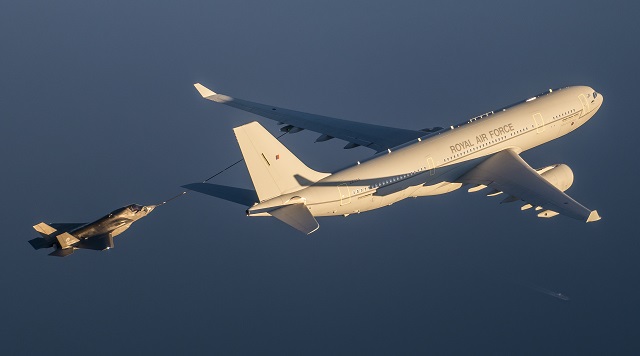
US Marine Corps F-35B BF-04 test aircraft flown by Lt Col Tom Fields completes aerial refueling test with the RAF KC-30 Voyager on 16 May
F-35 Intergraded Test Force
With a maximum fuel capacity of 111t, the Voyager will be a critical asset for future RAF and Royal Navy short takeoff vertical landing F-35B operations from RAF Marham. Refuelling certification is also a necessary step on the path to the 617 Sqn declaring F-35 initial operational capability in 2018.
The UK has 19 personnel assigned to the Lightning II development team at NAS Patuxent River and most will participate in the third and final F-35B sea trial aboard a Marine Corps Wasp-class amphibious assault ship later this year, according to the F-35 Joint Programme Office. The UK will begin its own ship integration trials aboard the HMS Queen Elizabeth in 2018.
By 2020, 10 F-35Bs will be based at RAF Marham, 15 F-35As at RAAF Williamtown in Australia, 16 in Italy and 10 in the Netherlands, according to Lockheed charts. The UK’s nine Voyager aircraft are assigned to RAF Brize Norton.
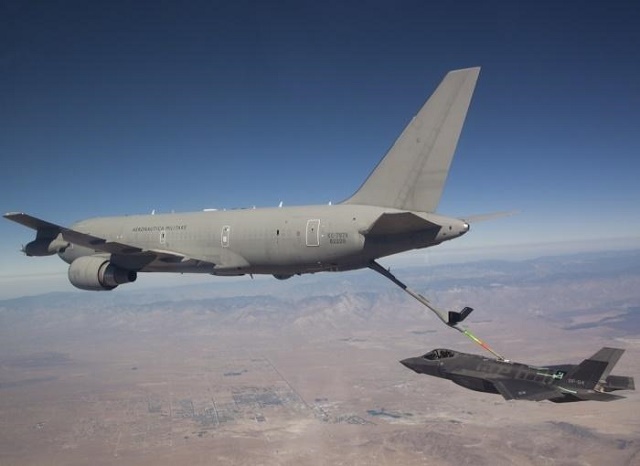
Italian KC-767A
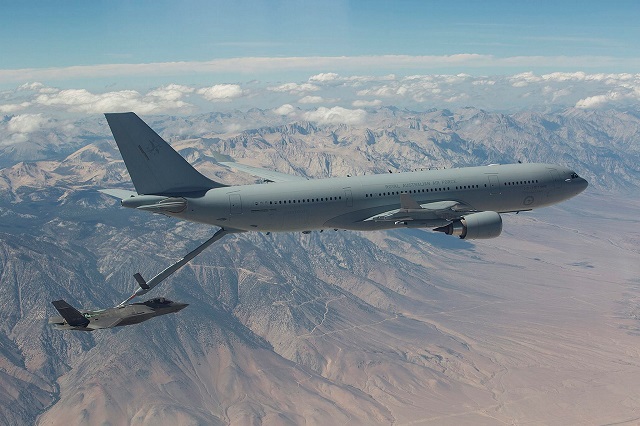
RAAF KC-30A
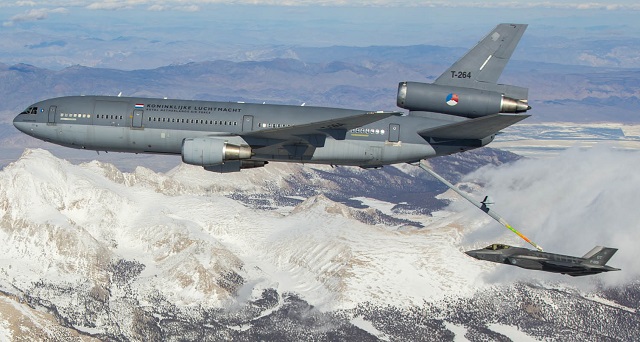
RNAF KDC-10
Pictures via the US Defense Department
Source: FlightGlobal.com
- UK Royal Air Force
- United States
Related articles

Cessna twinjet failed to gain altitude before striking power lines and restaurant: NTSB
2024-09-06T19:51:00Z By Howard Hardee
A Cessna 550 Citation II that was destroyed in a fatal accident last month failed to gain more than 10ft of altitude before striking power lines and a restaurant near a Texas airfield.

US Special Operations cuts Armed Overwatch acquisition nearly 20%
2024-09-06T19:50:00Z By Ryan Finnerty
US Special Operations Command is lowering its procurement target for the L3Harris OA-1K armed reconnaissance turboprop to 62 aircraft from the original target of 75, after scrutiny from government auditors.

Northrop releases first flight video of Scaled Composites Model 437 low-cost jet
2024-09-06T18:57:00Z By Ryan Finnerty
US defence manufacturer Northrop Grumman says subsidiary Scaled Composites has successfully flown a low-cost, single-engined piloted jet called the Model 437 Vanguard.
- Advertise with us
- Conferences and Events
- Newsletters
- Paid content
FlightGlobal is the global aviation community’s primary source of news, data, insight, knowledge and expertise. We provide news, data, analytics and advisory services to connect the aviation community globally and help organisations shape their business strategies, identify new opportunities and make better decisions faster.
- Announcements
- Terms and conditions
- Cookie policy
- Privacy policy
- © DVV Media International Limited
- Connect with us on Facebook
- Connect with us on Twitter
- Connect with us on Linked in
- Connect with us on Youtube
Site powered by Webvision Cloud
Unlock our take on the stories that matter for just £22 a month
Breaking news, expert analysis, member-first insights and commentary on the global aviation industry.
Home / Aircraft / KC-30 Voyager

ADVERTISEMENT

Primary operators (4+)

Production data (3)
- Production years 1974-2000
- Number built F/A-18A/B/C/D: 1,480
- Unit cost (Approx.) $29 million
Variants (4)
- F/A-18A Original 1-seater
- F/A-18B 2-seater, primarily for training
- F/A-18C Block upgrade model, 1987, 1-seater
- F/A-18D Block upgrade model, 1987, 2-seater
General characteristics (6)
- Role Tanker
- Wing Fixed wing
- Crew 3 (2 pilots + 1 AAR operator)
- Capacity Various passenger configs: 291 passengers (UK) and 8 military pallets + 1LD6 container + 1 LD3 container
- Engine count 2
- ICAO type designator A332
Structural data (4)
- Length 58.82 m (192.98 ft)
- Height 5.64 m (18.5 ft)
- Height (overall) 17.38 m (57.02 ft)
- Wing area 361.6 m² (3,892.26 sq ft)
Performance (1)
- Fuel capacity 111,000 kg (245,000 lb)
Delivery of KC-30A
The Air Force took delivery of the first of a planned total of five Airbus Military A330 Multi Role Tanker Transport (MRTT) aircraft, designated the KC-30A. The aircraft, A39-003, was officially handed over to No 33 Squadron at RAAF Base Amberley upon arrival from Madrid, Spain.
Related aircraft
In an effort to be in compliance with GDPR we are providing you with the latest documentation about how we collect, use, share and secure your information, we want to make you aware of our updated privacy policy here
- Email Address
- I’ve read and accept the terms of the privacy policy .
An Update on the KC-30A from Edwards AFB: Clearing the Way for Expanded Operations
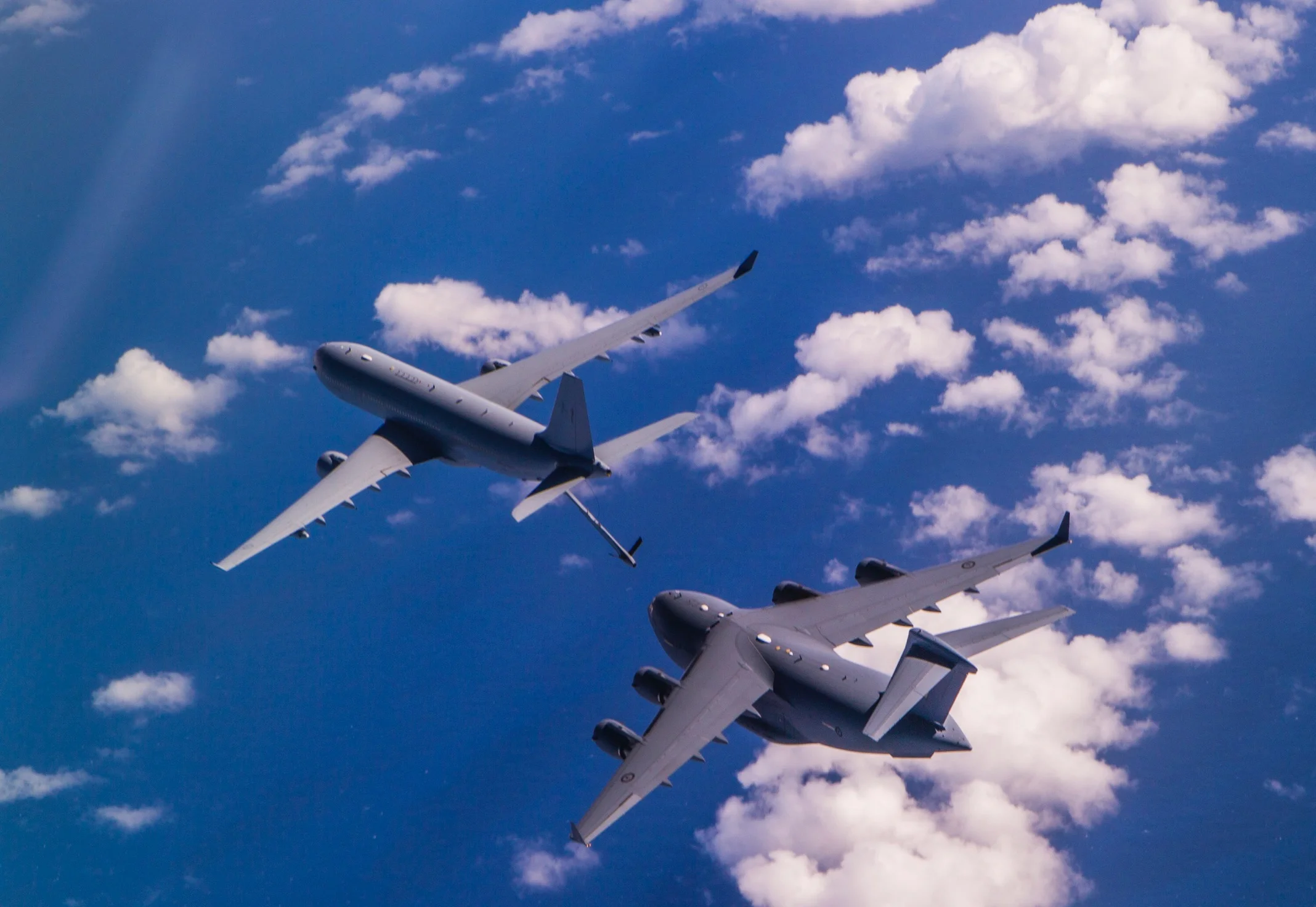
2016-04-30 By Robbin Laird and Ed Timperlake
After our day with the F-35 Developmental Test Team at Edwards AFB, we met with the KC-30A team at Edwards. The team was continuing the effort to clear the tanker boom with an ever-growing number of receiver aircraft.
The team we met with had experience with the aircraft during its current operations and the Middle East and provided a good overview to the aircraft, its evolution, and its role in shaping what has been the first engagement of the RAAF with its new combined air capabilities of Wedgetail, KC-30A, fighters and support and C2 elements to a long-distance operation.
This new capability of the RAAF to deploy a sovereign force package provides the Australian Defence Force and the Australian political leaders with new options and possibilities for national or coalition engagements worldwide.
The members of the team who participated in the interview are as follows:
- SQNLDR Jamie Minor, 33SQN KC-30A Captain
- SQNLDR Lee McDowall, Aircraft Research and Development Unit (ARDU) Senior Flight Test Engineer (FTE)
- FLTLT Tom Hawes, 33SQN KC-30A Co-pilot
- FLTLT Jacques Le Roux, ARDU FTE and KC-30A/C-17 Clearance Flight Test Lead
- FLTLT Ben Liersch, ARDU FTE and KC-30A/F-16 Clearance Flight Test Lead.
The main purpose of the team at Edwards was to work on C-17 and F-16 certification for the KC-30A boom.
The tanker has operated the hose and drogue system for some time, but the boom is just now becoming IOC’d.
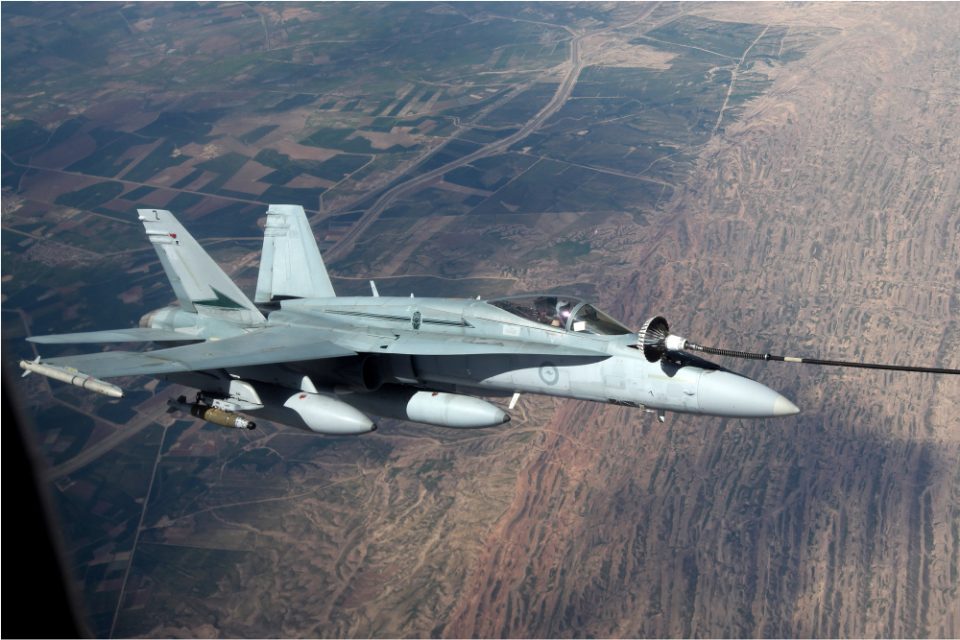
The number of aircraft certified has been growing and includes, RAAF Hornets and Super Hornets, USN Hornets and Super Hornets, the French Rafale, the Eurofighter and Tornado (via Voyager certifications), the Harrier and Prowler, the F-35, the Wedgetail, and upon leaving Edwards will have finished C-17 and F-16 clearances as well.
Question: When visiting the tanker squadron a couple of years ago and prior to your deployment to the Middle East, you were working on getting the boom operational.
How did that process happen?
Answer: Air Vice-Marshal Chris Deeble was given the task of shaping a way ahead.
And he did this by reworking the relationship with Airbus so that there could be a complete sharing of data and information to get the boom operational as effectively and quickly as possible.
We formed a joint committee or an integrated team where we shared all knowledge and work towards finding a common solution for the way ahead.
We removed the barriers that were artificially in place between Airbus and ourselves.
We pared down our requirements to those, which were both needed and realistic, and got rid of the ones which were generated more by our bureaucratic process than by what was needed for operational realities.
We wanted to get a capable and effective system more rapidly through this process and that is what has happened.
Question: Those who do not know about your tanker will not know that you tank from the front, rather than the rear of the aircraft.
What advantages has this given you in operations?
Answer: A major advantage when combined with the IR cameras and illuminations is that we can operate at night as effectively as in the day.
The view is so crisp that we can see the receiver pilot’s teeth when he comes in for fuel.
It is absolutely amazing.
And teamwork is much better.
We can have a very integrated team of the pilot, co-pilot and ARO (Air Refueling Officer) working together on the flight deck to work the mission with the aircraft coming in for fuel.
Question: Could you talk about your operational experiences?
Answer: With a new program, generally, you crawl, walk and then run.
With this program, we needed the capability relatively quickly so we sort of crawled and then ran.
The deployment to the Middle East has rapidly accelerated our maturing of the aircraft.
We went to the Middle East in the Fall of 2014.
We operate one tanker at a time in Operation Okra and a deployment is four months.
Some airmen have already completed three or four rotations in the mission.
Even though we have only one tanker there, we are delivering more than 10% of all the fuel in the operation.
We have offloaded around 40-45 million pounds of fuel in the Middle East during the operation to coalition forces.
We are operating at 96-98 percent mission success rate, and the maintenance has been outstanding.
It is a commercial plane with military systems onboard and is built for rapid fuel intake, for commercial airlines expect to turn around planes rapidly.
They don’t make money with the plane on the ground.
We can do this as well, but are limited only by the austere conditions at military bases which slows the refueling process.
And the efficiency of the engines is outstanding which means that we burn less fuel than a KC-10 or KC-135 when flying and doing the tanking operations.
Question: With the situational awareness which you have on the plane, you operate the plane often to the fighter rather than forging a track to which the fighter goes.
Could you describe that capability?
Answer: We have a very good communications suite, including SATCOM, on the aircraft, as well as Link 16.
So we can see the fighters in the battlespace and we can see their fuel loads and anticipate where the need for refueling might lie.
It is about positioning yourself efficiently to refuel fighters to get them back in the fight as rapidly as possible; it is not just about being a tracked gas station in the sky.
And with our communications capabilities we can act as a relay between the fighters and other assets in the battlespace and link back to the home base as needed as well.
We can function as a communications relay for the fighter fleet as well.
Question: You are reshaping the tanker culture?
Where do your crews come from and how are they preparing for the boom part of your tanker’s future?
Answer: We have a mixture of people with fighter, tanker and airlift experience.
It is a mixed crew in terms of background.
And we have an exchange with the USAF with the KC-10 are building up our boom training and experience with them as well.
Question: How are the coalition partners responding to your tanker and your efforts?
Answer: We are the tanker of choice.
The amount of respect we are getting from being in the Middle East, I’ve never seen anywhere else. Especially from Marines and the U.S. Navy, we constantly hear: “We want you guys every time we’re going to do a strike package.”
So whenever there’s a strike package happening, they request us when possible: “We want the Aussie KC-30 tanker on board.“
Question: The KC-30A is being used by a number of other Air Forces, although you are the lead country is using the aircraft. What have been your interactions with them?
Answer: We have growing interaction with non-USAF’s which is also broadening our mutual experience.
For example, we have an exchange with the French, whereby the French are leveraging our work to shape their transition strategy with their own tanker.
All of the clearances we are doing for ourselves benefit all the other KC-30A air forces.
And we think we are driving the entire KC-30A enterprise forward as well evolve our experience and our capabilities.
During the tests here, we have an Airbus person with us as we certify the boom.
We have embedded him in our team and put an Australian flag on his back and made him feel like one of us.
And that breaks down the barriers necessary to have the kind of innovation, which we want to see.
Editor’s Note: Not only are the Aussies evolving the qualitative elements of their tanking operations and culture, but they are increasing the numbers as well.
Because the MRTT is a derivative of a commercial aircraft, it is possible to leverage a used commercial aircraft as the baseline aircraft which can be modified.
This is what the Aussies are doing.
According to a story published on July 1, 2015 by Australian Aviation :
Australia is to acquire two further Airbus KC-30A tanker-transports, taking the RAAF’s fleet to seven, Defence Minister Kevin Andrews has announced. “The two additional KC-30A aircraft will be delivered in 2018 and provide a substantial increase to the air-to-air refuelling capacity of the RAAF,” Andrews said in a statement on Wednesday. “Defence has signed an update to the existing acquisition contract with Airbus Defence and Space for the two aircraft and associated conversion at a cost of approximately $408 million.” The KC-30 (Airbus calls it the A330 MRTT – Multi Role Tanker Transport) is a development of the A330-200 airliner, featuring an ARBS (Advanced Refuelling Boom System) boom mounted beneath the rear fuselage and underwing mounted ‘probe and drogue’ pods. It also has a significant ‘air logistics support’ capability able to carry cargo in its underfloor freight compartments and, in RAAF service, 270 passengers in airliner-style seating. Although four of the original five aircraft were converted from ‘green’ A330 airframes to their KC-30 configuration by Qantas Defence Services (now Northrop Grumman Australia Integrated Defence Services) at Brisbane Airport, the two new aircraft – secondhand ex Qantas A330-200 airliners – will be converted to tanker configuration by Airbus Defence and Space at Getafe, Spain.
Indeed, if one visits Getafe, Spain, it is possible to see the first Qantas modified jet.
It is to be found as of the end of April 2016, in the first of the three hangars through which over an 8-month period, the commercial jet becomes a tanker.
The second is standing outside of three hangars ready to enter the process of conversion.
By the way, in the other two hangars are the first and second Singaporean tankers being built from “green” commercial jets.
With regard to the qualitative evolution of the tanker and its culture, the Air Commander Australia , Vice Air-Marshal Gavin Turnbull had this to say:
What we have given the tanker crew is what the fighter pilot experienced in the first decade of the 21st century. We added Link 16 into the cockpit and suddenly they had situational awareness of the battlespace around them and could now work within the battlespace, rather than simply going to a tanker track and acting as a gas station in the sky waiting for the planes to come in to get gassed up. This has meant changing the skill set for the tanker crew as well. We need to have smart people with smart situational awareness combat skills rather than truck drivers. They now position themselves where they’re next needed. They’re maintaining their awareness and they’re moving into the battle space, and the jets are coming off their targets and are surprised about how close the tanker is. In fact, we’re starting to get the reverse complaint where pilots who are coming off targets don’t have time to think and reconfigure their airplane before they’re on the wing of the tanker getting some more fuel.
And what this means in practice is a more capable asset, combat team and force.
This was pointed out by Air Commodore Lennon , Commander of the Air Mobility Group, who discussed the case of working with a Marine Corps pilot over Iraq.
A USMC Hornet lost an engine, and was in danger of going down in an area where it might not be good for the pilot to land or bail out.
The KC-30A came to the Hornet and supported it as the aircraft had to fly down in a cascading pattern to get back to base.
“Link 16 can tell you where the assets are and the fuel status of the air combat force. But it cannot tell you about intentions.
You get that from listening to the chat.
In this case, the pilot was listening to the chat and discovered a problem.
He then flew to the problem.
The Marine Corps Hornet had lost an engine and could not stay level at the refueling speed, so they set up a descent pattern to work the problem.
They could not do that until they were outside of the core combat area.
They set up what is called a toboggan where you just slow the descent so the Hornet could keep up his speed to get refueled.
And of course as he transferred fuel, he got heavier which in turn made it more difficult to keep your speed up, but the tanker adjusted to the need for the Hornet.”
Air Commodore Lennon also highlighted an aspect of Tanker 2.0 in terms of new capaiblities as well.
“Airbus is working hard on building an autonomous boom where the boom will actually work out where the receptacle is and fly itself into contact.
This will ease the workload for the tanker crew, and provide significant capabilities to fuel new assets coming to the tanker, such as UAVs. It would be an important step forward.
If you have a good reliable autonomous system, then the boom operator is not tiring as quickly and so you can stay on station longer and enhance your persistence in the battle space.”
For a PDF version of this article, download here .
Editor’s Note: The Aussies are currently completing certification of their C-17s begun at Edwards with their own C-17s in Australia.
The slideshow below is credited to the Australian Ministry of Defence and shows the tanking of the Aussies own C-17 with the KC-30A in the skies near Brisbane, Australia.
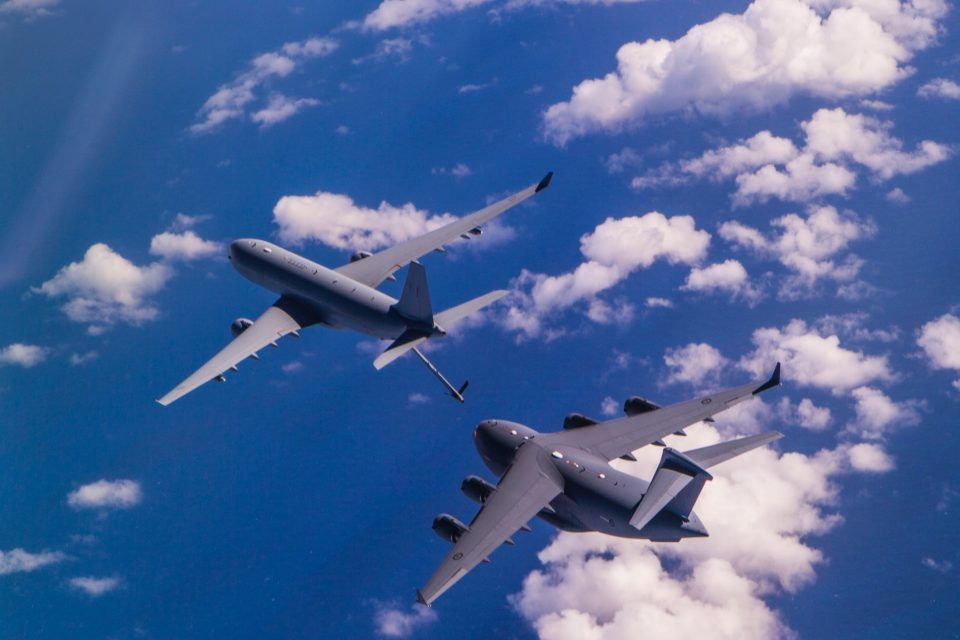
A flight test team from the Aircraft Research and Development Unit successfully conducted the first air-to-air refuelling trials between a RAAF KC-30A Multi Role Tanker Transport and a RAAF C-17A Globemaster III on 27 April 2016 off the Queensland coast.
Pilots and aerial refuelling operators from No 33 Squadron and No 36 Squadron, both based at RAAF Base Amberley, as well as members of the United States Air Force were also involved in the trials.
These trials are part of the clearance program for air-to-air refuelling from the KC-30A’s Aerial Refuelling Boom System (ARBS), which is also compatible with refuelling the F-35A Lightning II, as well as the E-7A Wedgetail, P-8A Posideon, and other KC-30As. Air-to-air refuelling increases the operating range of RAAF aircraft, and is a critical capability in establishing the RAAF as a modern and fully integrated combat force.
The Aircraft Research and Development Unit is located at RAAF Base Edinburgh and is part of the RAAF Air Warfare Centre, which is responsible for driving innovation and integration across the Air Force.
For the version of this article which appeared on National Interest, see the following:
http://nationalinterest.org/blog/the-buzz/interview-flight-testing-australias-airbus-kc-30-tanker-16009

- September 8, 2024 Netherlands Announces More F-35 Fighters, NH90 Helicopters in New $2.7B Defense Plan F-35
- September 7, 2024 U.S, Europe Are Helping Ukraine Develop Substitute for S-300 Air Defense System and R-27 Missile Troubled Areas
- September 7, 2024 RTX Fined $200M for Leak of F-22, F-35, B-2, E-3 And Other Aircraft’s Data to Russia, Iran, China Military Aviation
- September 7, 2024 Highest-time A-10 Pilot Retires After 37 Years Of Service And 7,500 Hours In The Warthog Military Aviation
- September 6, 2024 First Ever Sling Load Training with the HH-60W Jolly Green II at Moody Air Force Base Helicopters
The Royal Air Force completes F-35B Tanker Trials a Week Early
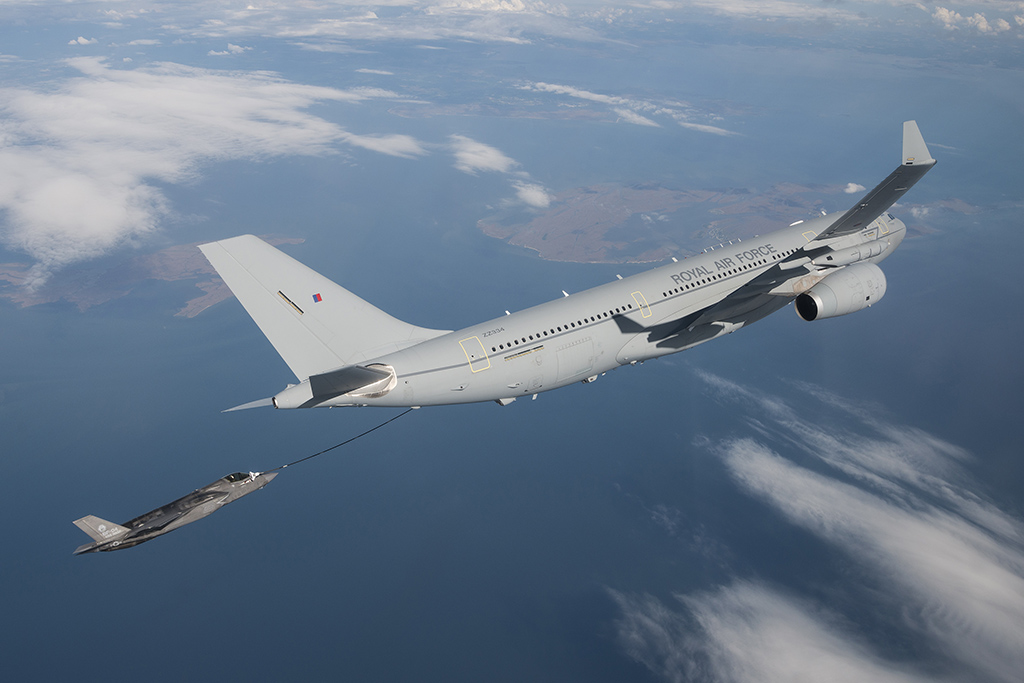
….and here are some stunning air-to-air shots!
During a seven week detachment to Naval Air Station Patuxent River, a Royal Air Force (RAF) A330 Voyager tanker conducted 18 air-to-air refueling (AAR) test trials with an F-35B Lightning II Short Takeoff and Vertical Landing (STOVL) aircraft from the F-35 Pax River Integrated Test Force (ITF).
According to the ITF, the testing campaign carried out by joint RAF – Pax River ITF test team was completed one week early, demonstrating the team’s efficiency by accomplishing its test plan in 18 flights rather than the scheduled 20 flights.
The trials included day, twilight, and evening plugs between the F-35’s IFR (In-Flight Refueling) probe and the tanker’s hose (indeed RAF’s A330 Voyager tankers are only equipped with the U.S. Navy’s standard “hose and drogue” system).
The test trials generated data for the assessment of the wing pods and the fuselage refueling unit in anticipation of a flight clearance that will support the U.K.’s F-35B Lightning II Initial Operating Capability (IOC) in 2018.
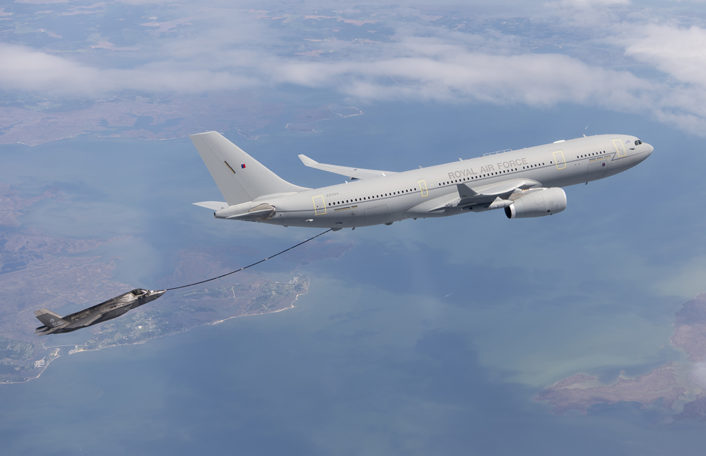
The U.K. has 19 RAF and Royal Navy personnel embedded within the F-35 Pax River ITF. Many of these British military participate in the shipboard developmental test (DT) phases for both the F-35B and F-35C.
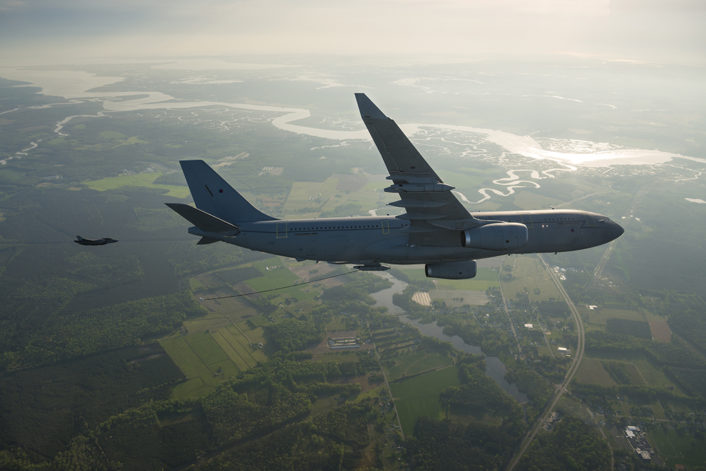
U.K. personnel supported the first two phases of F-35B testing aboard USS Wasp (LHD 1) and the first two phases of F-35C testing aboard USS Nimitz (CVN 68) and USS Dwight D. Eisenhower (CVN 69), respectively. They are set to embark on the third and final phases of testing at sea for the two F-35 variants, ahead of the U.K.’s own F-35B Ship Integration trials scheduled to take place aboard UK’s new Queen Elizabeth aircraft carrier in 2018.
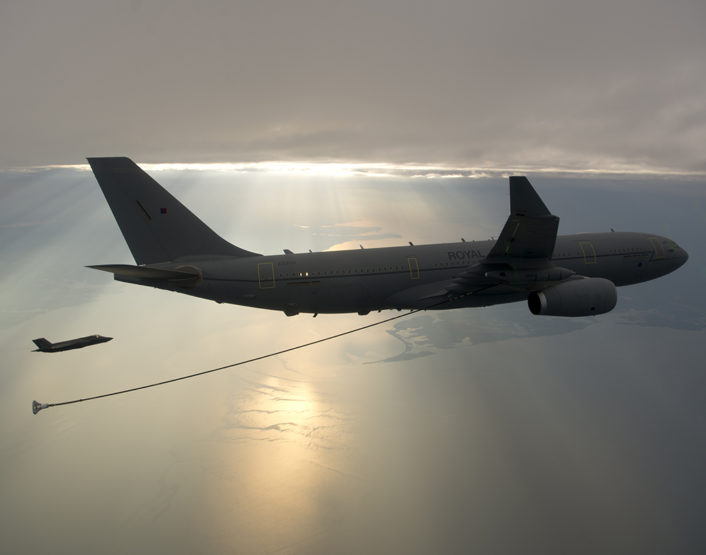
HMS Queen Elizabeth will use a ski-jump ramp to help the launching plane take off with an upward flight path and a BAE Systems Test Pilot launched the F-35B from a land-based ski-jump for the very first time at Pax River in June last year.

Special thanks to Sylvia Pierson, F-35 Lightning II Naval Variants Public Affairs Officer (PAO). Photo Credits Lockheed Martin.
Related articles

- Aerial refueling
- Lockheed Martin F-35 Lightning II
- Royal Air Force
- United Kingdom
Copyright © 2024 | MH Magazine WordPress Theme by MH Themes Contents of this blog/website may not be used without author's prior written permission. All rights reserved.
- Write for us
- Terms of use
- Privacy Policy
- Advertise with us

- Defense & Geopolitics News
- War Conflicts News
- Air Force News
- Missiles Systems News
- Nuclear Weapons
- Defense Technology
- Cybersecurity News
- Military Photos
- Defense Forum
- Military Videos
- Weapon Systems
KC-30 Tanker Aerial Refueling Boom System Successfully Completes In-Flight Test
Northrop Grumman,
MELBOURNE: The Northrop Grumman Corporation KC-30 Tanker Aerial Refueling Boom System (ARBS) performed its first in-flight contacts with a receiver aircraft, marking the successful completion of a key program milestone and underscoring the company's low-risk approach for quickly replacing the U.S. Air Force's KC-135 tanker fleet.
The initial refueling contacts used the advanced ARBS installed on an A310 testbed aircraft, which operated with an F-16 receiver aircraft flying at 27,000 feet. The contacts reflected a typical refueling mission, with the ARBS' 40-ft.-long boom deployed to its operational length and inserted into the F-16 receiver aircraft's refueling receptacle.
Multiple boom hook-ups were conducted with the F-16. The ARBS was controlled by Don Cash, a 21-year U.S. Air Force veteran and refueling boom operator, using the A310's Remote Aerial Refueling Operator (RARO) console. The RARO station employs a three-dimensional vision surveillance system, providing a high-fidelity visual representation of the boom's position during the entire air-to-air refueling process. Today's flight test was the 60th for the boom, totaling more than 160 flight hours.
“Successful completion of this milestone reflects the KC-30 industrial team's focus on providing a next-generation, low-risk solution for recapitalizing the Air Force's refueling assets,'' said Paul Meyer, Northrop Grumman vice president and general manager of the KC-30 program. “The pace of our test and development program, including the completed assembly and flight testing of the very first KC-30 Tanker aircraft, is strong evidence that the KC-30 Tanker will meet or exceed all U.S. Air Force requirements.''
Northrop Grumman's KC-30 Tanker teammate EADS developed the ARBS, the most capable in-flight refueling system available today. It is already onboard the first of five KC-30B Multi-Role Tanker/Transport aircraft EADS is supplying to the Royal Australian Air Force and will be used on three similar A330 MRTT aircraft ordered by the United Arab Emirates.
Fly-by-wire technology incorporated in the ARBS provides enhanced controllability and includes an automatic load alleviation system, which greatly aids the boom operator — as well as the receiver aircraft's pilot — during refueling operations. With the capacity to offload up to 1,200 gallons of fuel per minute, the ARBS is easily adaptable to future mission requirements, including the refueling of unmanned aerial vehicles.
“A new era in aerial refueling has begun with our team's advanced ARBS' initial in-flight contacts,'' said John Young, chief executive officer of EADS North America Tankers. “The ARBS brings tanker technology into the 21st century with a highly capable refueling system that will fulfill Air Force aerial refueling requirements throughout the KC-30's operational life.''
Following the ARBS' initial in-flight contacts, subsequent tests will be performed with fuel transfers from the A310 testbed's boom to a variety of receiver aircraft.
A powerful U.S. and allied industrial team led by Northrop Grumman has been established to produce and supply KC-30 Tankers for the U.S. Air Force. The aircraft is based on the A330 Multi-Role Tanker Transport (MRTT), which was selected by the air forces of Australia, the United Kingdom and the United Arab Emirates.
The KC-30 Tanker aircraft will be assembled in Mobile, Ala., and the KC-30 team will employ 25,000 American workers at 230 U.S. companies. It will be built by a world-class industrial team led by Northrop Grumman, and includes EADS North America, General Electric Aviation and Sargent Fletcher.
About the KC-30: Northrop Grumman's KC-30 Tanker carries 45,000 more pounds of fuel than a KC-135 or any competitor, providing a significant boost to the U.S. Air Force's global reach. The KC-30 is also designed to refuel Navy and coalition aircraft, and to serve as a multi-role transport aircraft to move passengers, cargo and medical evacuation patients. The KC-30 incorporates defense systems, precision fly-by-wire technology, and the ability to integrate a militarized communications suite and a global support network.
Northrop Grumman Corporation is a $30 billion global defense and technology company whose 120,000 employees provide innovative systems, products, and solutions in information and services, electronics, aerospace and shipbuilding to government and commercial customers worldwide.
Saudi Typhoon Programme Worth Up to £1 Billion to Rolls-Royce
Raf merlins prove masters on african adventures, related posts.
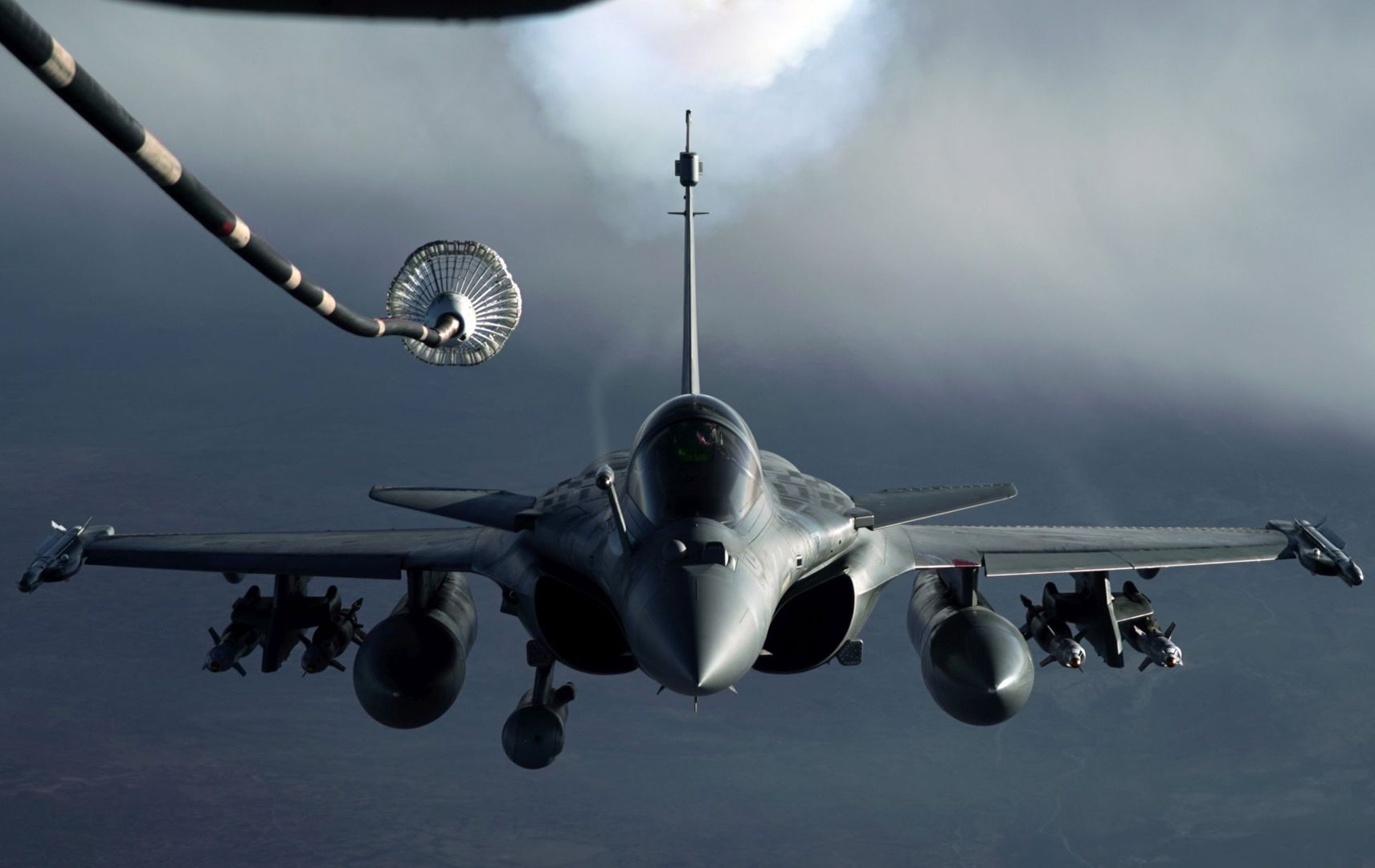
Croatia gets French fighter jets in major arms purchase
Croatia took delivery Thursday of six Rafale fighter jets it has bought from France in the country's biggest arms purchase...
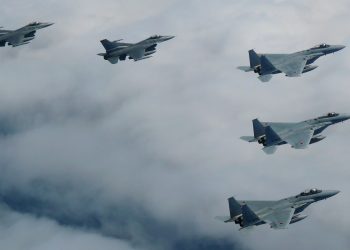
Japan’s cabinet approves fighter jet exports
Japan's cabinet on Tuesday eased strict transfer rules for military equipment to allow the export of next-generation fighter jets being...
Latest Defense News

Kremlin rejects US claims Russia used ‘chemical weapon’ in Ukraine

China’s new aircraft carrier conducts first sea trials: state media
Manta ray uuv moves closer to operational readiness after successful tests.

China warns US military support for Taiwan increases ‘risk of conflict’

UK aims to boost economic defences against security risks
Defense forum discussions.
- The Russian-Ukrainian War Thread
- Royal Australian Navy Discussions and Updates 2.0
- Military Aviation News and Discussion
- Indian Military Aviation; News, Updates & Discussions
- Japan, Koreas, China and Taiwan regional issues
- The Indonesian Army
- US Navy News and updates
- Russia - General Discussion.
- Australian Army Discussions and Updates

© 2003-2020 DefenceTalk.com
Navigate Site
- Defence Forum
Forgot your Password?
KC-30 Voyager seating
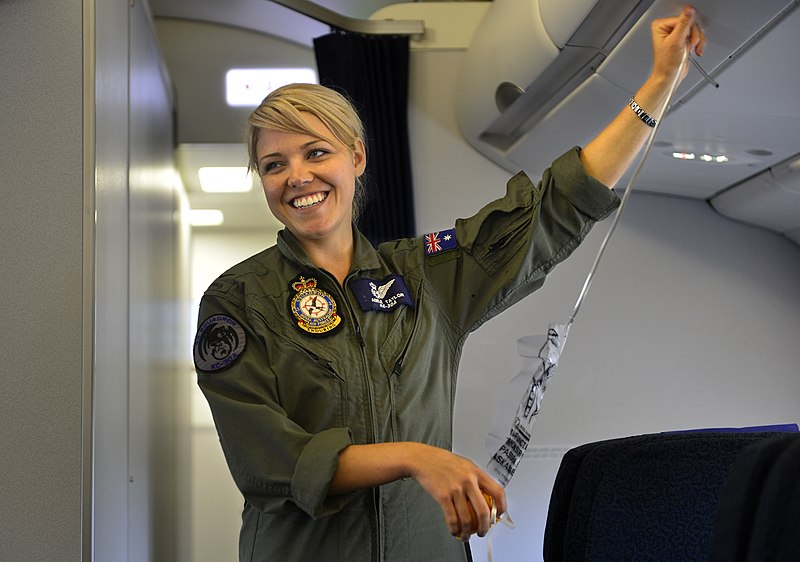
Contact Us - Archive - Advertising - Cookie Policy - Privacy Statement - Terms of Service
Copyright © 2024 MH Sub I, LLC dba Internet Brands. All rights reserved. Use of this site indicates your consent to the Terms of Use.

IMAGES
VIDEO
COMMENTS
Airbus A330 MRTT
Voyager - Royal Air Force ... Voyager
The KC-30A MRTT aircraft is propelled by two axial-flow, two-shaft CF6-80E1A3 turbofan engines, developed by General Electric. Each engine develops a thrust of 68,530lb. The propulsion system also consists of R88DT high-pressure turbine rotor and a full authority digital engine control (FADEC) system.
A330 MRTT | Military Aircraft
KC-30A Multi-Role Tanker Transport - Royal Australian Air Force
2 x Rolls-Royce Trent 772B turbofan engines developing 72,000lbs of thrust each. Operational range when compared to distances between major cities (in KM). The nose-to-tail, wingtip-to-wingtip physical qualities of the AirTanker Voyager (A330 MRTT) In-Flight Refueling Tanker Aircraft. The more full the box, the more balanced the design.
The Voyager is the RAF's only air-to-air (AAR) tanker and can also be used as strategic air support.. There are two versions currently in service - the Voyager KC.Mk 2, which has two underwing pods for refuelling fast jets, and the Voyager KC.Mk 3, which has an extra centreline hose for bigger aircraft.
Voyager is the RAF's sole air-to-air refuelling (AAR) tanker and also operates as a strategic air transport. The aircraft is in service as the Voyager KC.Mk 2, equipped with two underwing pods for refuelling fast jets, and as the Voyager KC.Mk 3, with an additional centreline hose for use by large aircraft. CAPABILITY
The A330-200MRTT, or KC-30A, was a substantially modified military derivative of the A330-200 airliner, 20 of which have been operated by Qantas. A contract was signed with Qantas Airways Ltd in February 2007 to provide service to the aircraft. The first KC-30A was rolled out of the modification facility at Getafe near Madrid in Spain in June ...
The new tanker transporters, known as Voyager in the RAF service, replaced the RAF's fleet of 26 VC-10 and Tristar tanker aircraft. ... In February 2008, the KC-30 (since re-designated the KC-45), a tanker based on the A330, was preferred for the US Air Force KC-X next-generation tanker requirement to replace the KC-135. Northrop Grumman led ...
The KC-30A Multi-Role Tanker Transport (MRTT) is a heavily modified Airbus A330 airliner that enables Air Force to conduct air-to-air refuelling and provide strategic air lift. It features advanced communication and navigation systems, and an electronic warfare self-protection system. The Air Force's seven KC-30A aircraft are based at RAAF Base Amberley, operated by No. 33 Squadron. Since ...
The Voyager, a modified A330-200 airliner designated KC-30, has already performed five of 20 planned test flights with the final one expected by mid-June to achieve F-35 tanking certification.
Robbin Laird During a visit to Amberley Airbase, Murielle Delaporte and I had a chance to talk with Group Captain Steve Pesce, Officer Commanding 86 Wing, comprising the RAAF's C-17, KC-30A, B300, CL604 and B737 fleets. We discussed his perspectives on the future of air tanking, and specifically the next steps in the evolution of […]
Airbus A330 MRTT - Price, Specs, Photo Gallery, History
KC-30 Voyager - Airwolfhound. CC-BY-SA-2. . License details. General characteristics (6) Role. Tanker. Wing. Fixed wing. Crew. 3 (2 pilots + 1 AAR operator) Capacity. Various passenger configs: 291 passengers (UK) and 8 military pallets + 1LD6 container + 1 LD3 container. Engine count. 2. ICAO type designator. A332. Structural data (4)
1 Jun 2011. The Air Force took delivery of the first of a planned total of five Airbus Military A330 Multi Role Tanker Transport (MRTT) aircraft, designated the KC-30A. The aircraft, A39-003, was officially handed over to No 33 Squadron at RAAF Base Amberley upon arrival from Madrid, Spain. The Air Force took delivery of the first of a planned ...
Royal Australian Air Force Airmen from the 33 Squadron deliver fuel from a KC-30A Multi Role Tanker Transport (MRTT) to a U.S. Air Force C-17 Globemaster III...
2016-04-30 By Robbin Laird and Ed Timperlake. After our day with the F-35 Developmental Test Team at Edwards AFB, we met with the KC-30A team at Edwards. The team was continuing the effort to clear the tanker boom with an ever-growing number of receiver aircraft.
The KC-30 Tanker benefits from the A330's active production line and its fully operational industrial supply chain, as these jetliners continue their sales success with airlines and government customers worldwide. To date, more than 1,110 A330/A340s have been sold, with approximately 800 delivered to international operators and over 240 A330s ...
Air. 30 June 2020. |. By: Stephen Kuper. The UK Royal Air Force has completed its refurbishment to one of the fleet of Airbus Voyager/KC-30 multi-role tanker transport (MRTT) to provide a secure, cost-effective and suitably profiled transport for the UK government ministers and the royal family. You're out of free articles for this month.
RAF Voyager (KC-30) air refueling testing on 26 April 2016 piloted by RAF Squadron Leader Andy Edgell. The U.K. has 19 RAF and Royal Navy personnel embedded within the F-35 Pax River ITF. Many of ...
Northrop Grumman's KC-30 Tanker teammate EADS developed the ARBS, the most capable in-flight refueling system available today. It is already onboard the first of five KC-30B Multi-Role Tanker/Transport aircraft EADS is supplying to the Royal Australian Air Force and will be used on three similar A330 MRTT aircraft ordered by the United Arab Emirates.
Military Aviation - KC-30 Voyager seating - I'm apparently heading home on a Voyager in a few days, and was wondering what the seating is like for SLF in the back. Is it first class leather recliners, with champagne and free newspapers, or is it more like those vertical Ryanair plastic benches. In short: Do I need a